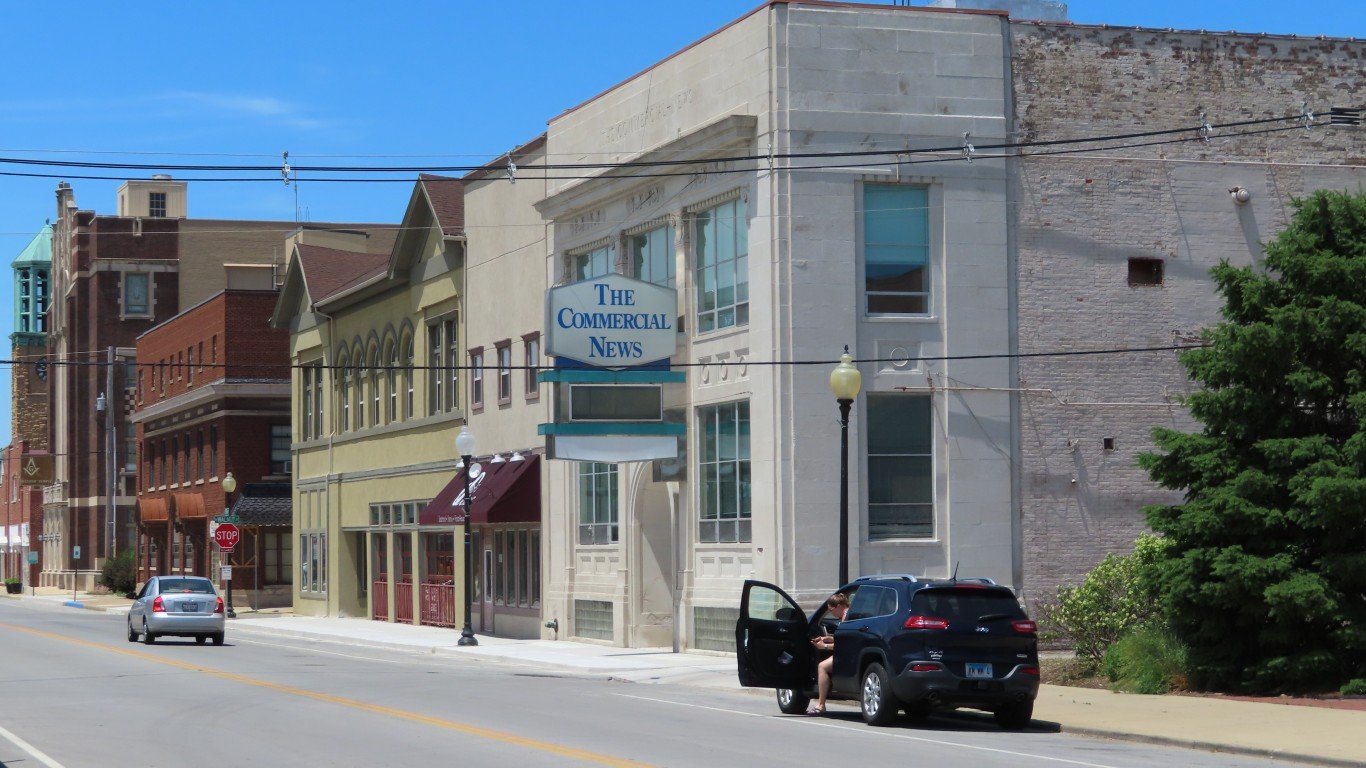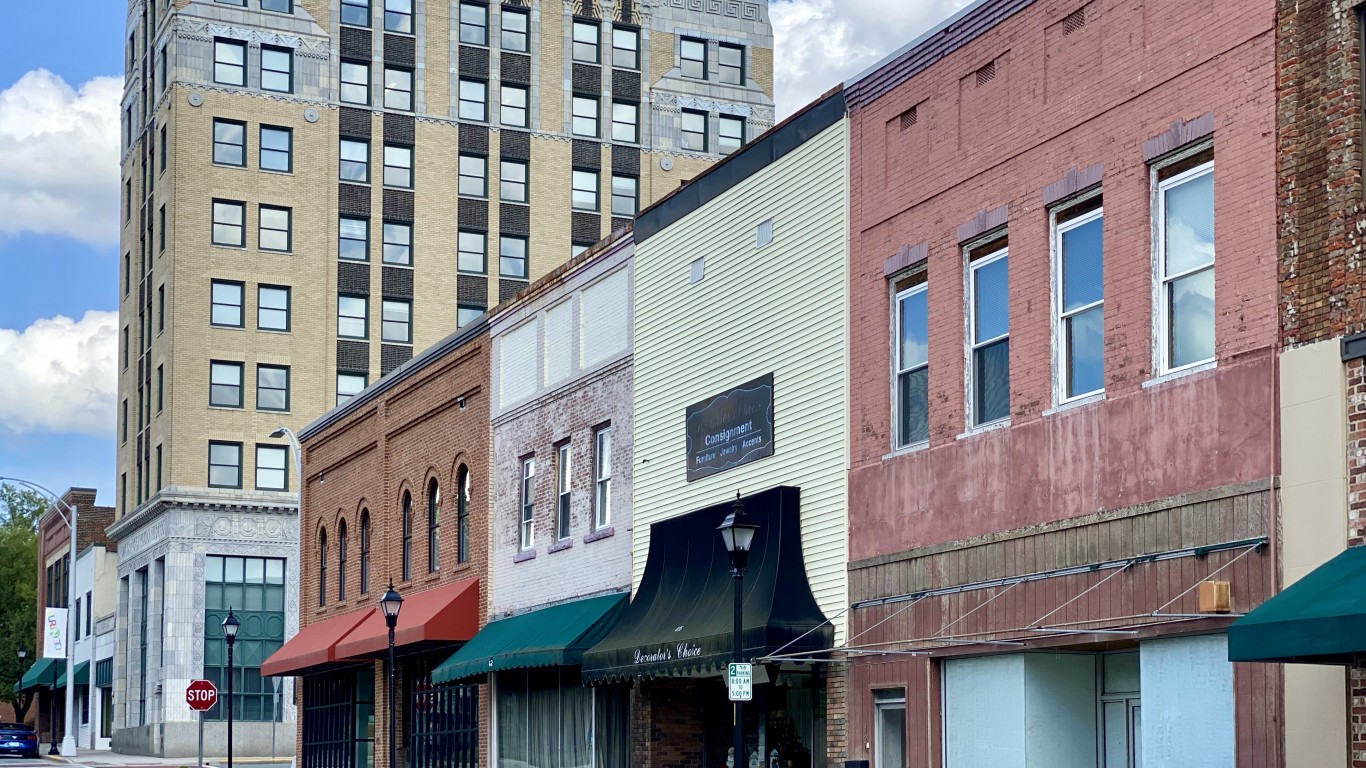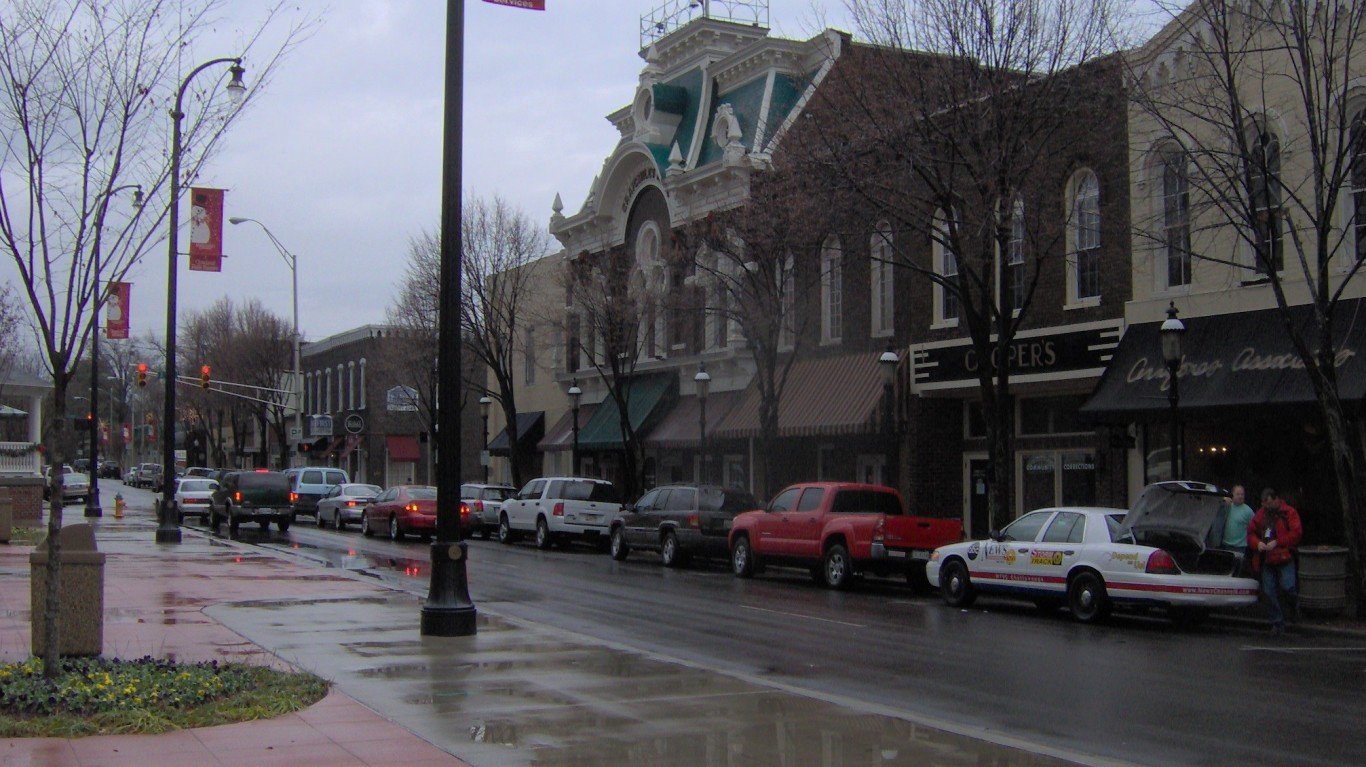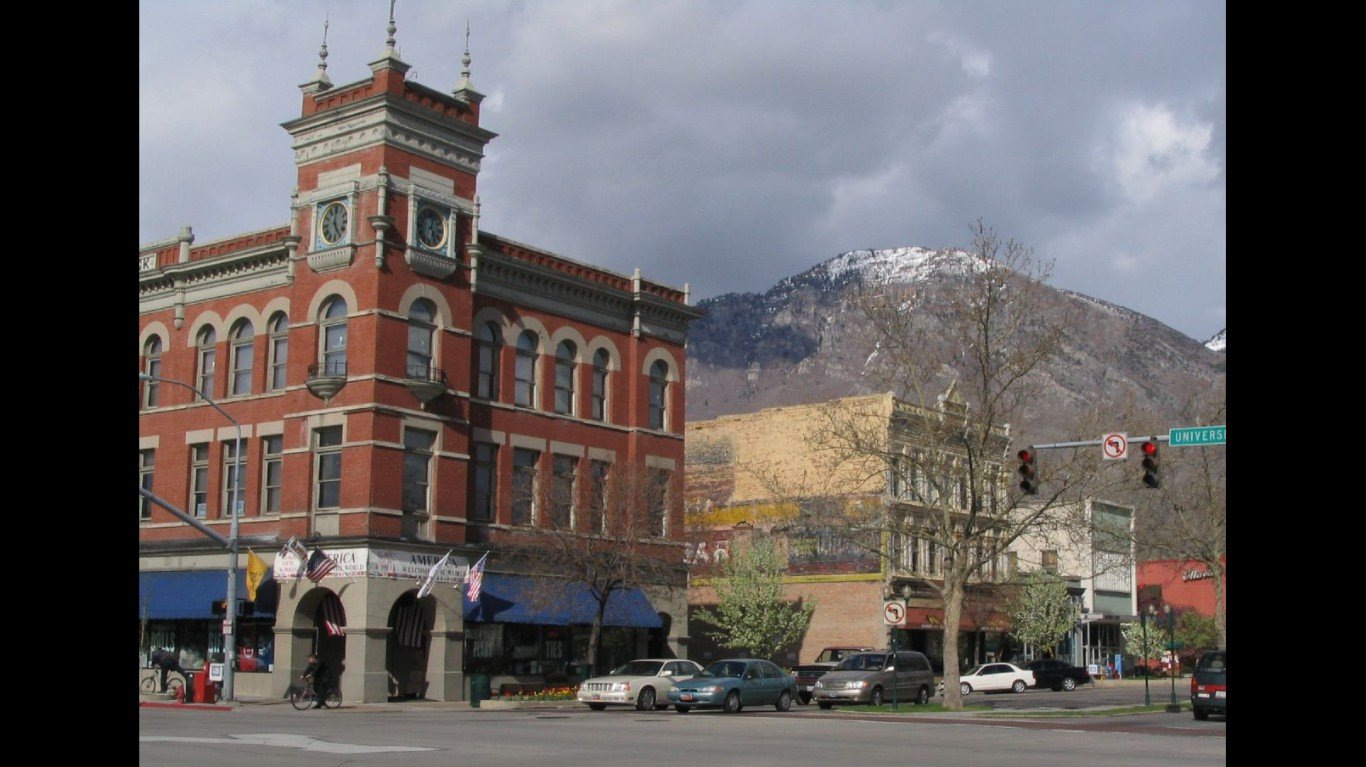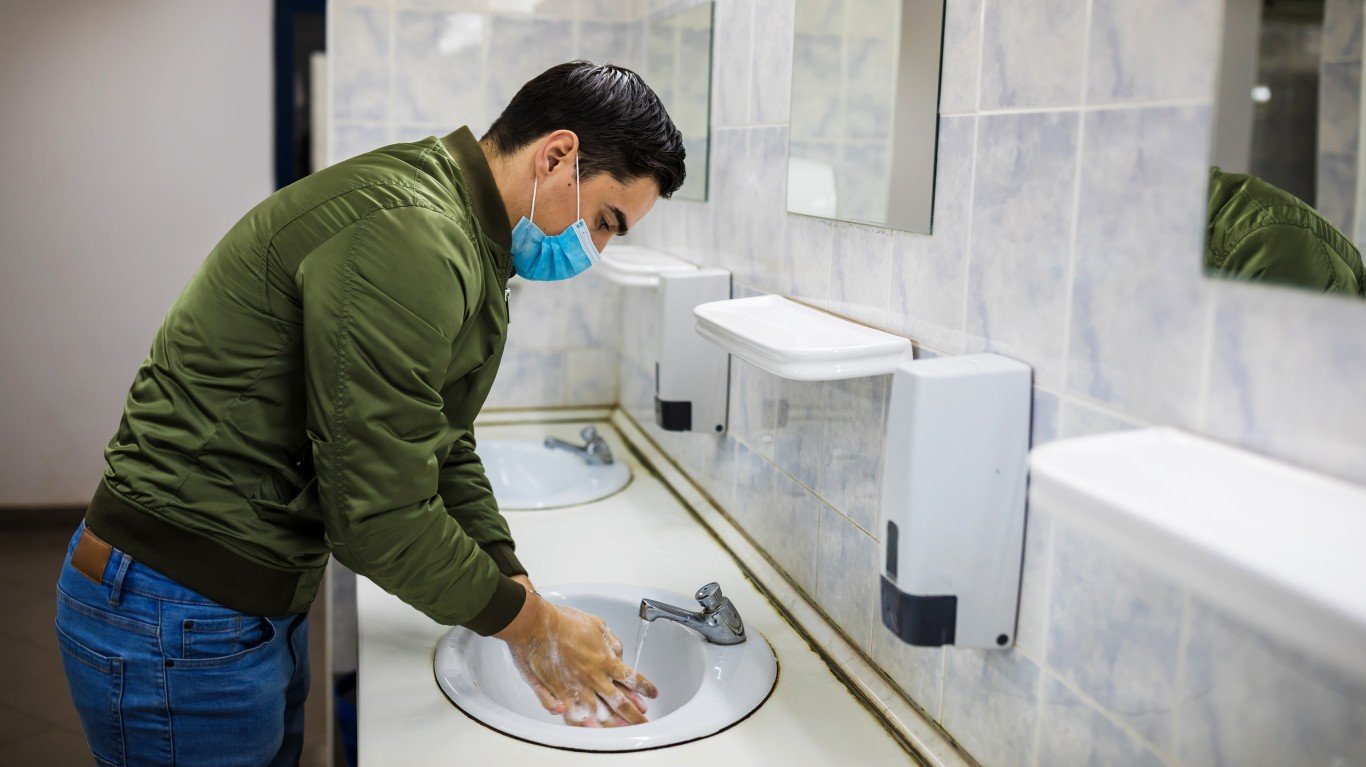

The U.S. has reported more than 63.8 million confirmed COVID-19 cases as of January 18. More than 840,000 Americans have died of COVID-19 — the highest death toll of any country.
The virus has spread throughout the country in a way that has been difficult to predict, surging in one region, then showing signs of improvement, and then reappearing in other regions. Though local outbreaks may ebb and flow, the current surge in cases has been felt nearly nationwide, leading to new travel restrictions and business closures around the country.
Nationwide, there were an average of 221.4 daily new coronavirus cases per 100,000 Americans in the week ending January 18. Cumulatively, the U.S. has reported 19,451.3 cases per 100,000 Americans, and 256.2 deaths per 100,000 Americans.
The coronavirus has spread to different parts of the country in different stages throughout the pandemic. In the spring, the worst hit states were in the Northeast, as New York City became the epicenter of the nation’s crisis. The virus spread to states throughout the Sun Belt in the summer, and hit states in the Midwest and West during the fall. Now, nearly every state is categorized as a COVID-19 hotspot, according to definitions based on new cases per capita from the nonprofit health organization Kaiser Family Foundation.
While the nation’s largest metropolitan areas were hit hardest in the early months of the pandemic, nearly every city has suffered from the virus. Outbreaks are particularly likely to occur in places where large numbers of people tend to congregate, leaving cities with high concentrations of colleges, correctional facilities, and nursing homes particularly at risk.
To determine the metropolitan area in each state with the highest number of COVID-19 cases per capita, 24/7 Wall St. compiled and reviewed data from state and local health departments. We ranked metropolitan areas according to the number of confirmed COVID-19 cases per 100,000 residents as of January 18. Data was aggregated from the county level to the metropolitan area level using boundary definitions from the U.S. Census Bureau. Population data used to adjust case and death totals came from the U.S. Census Bureau’s 2019 American Community Survey and are five-year estimates.
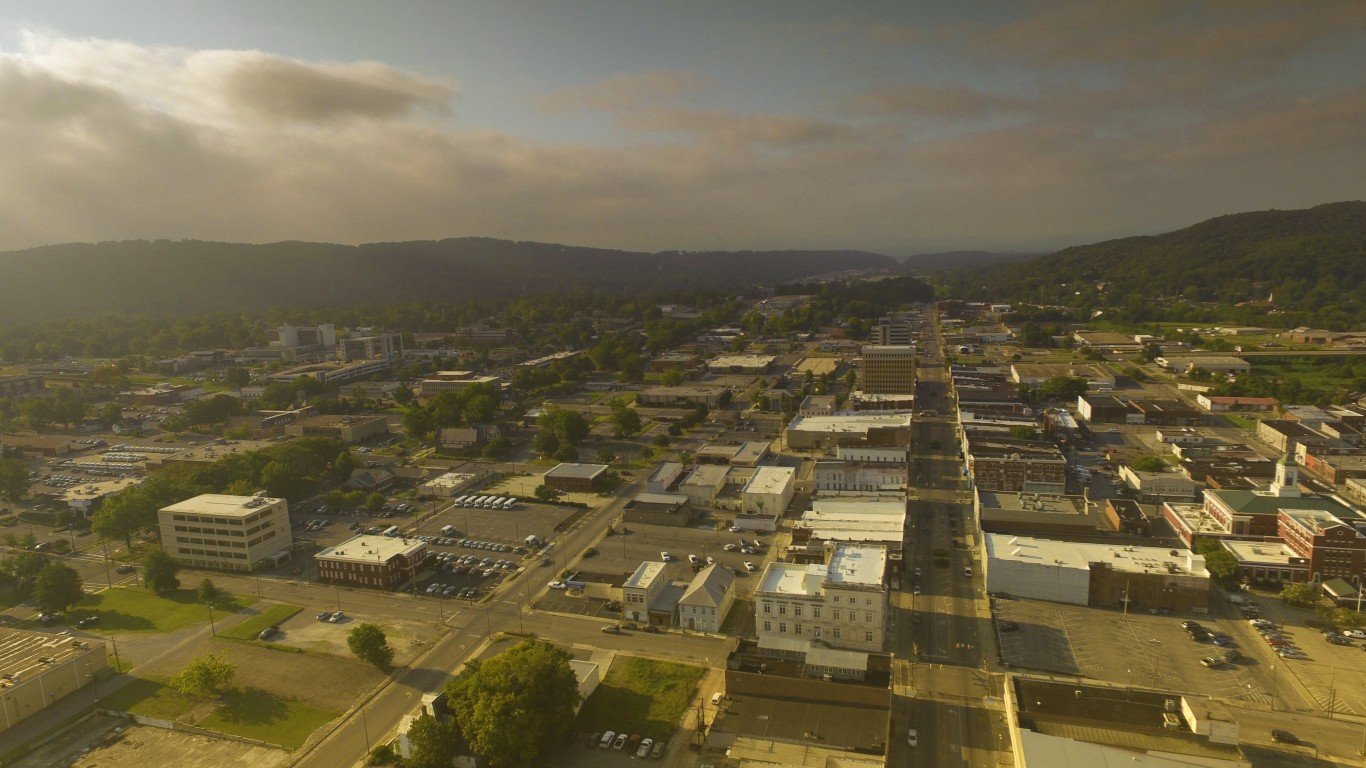
Alabama: Anniston-Oxford
COVID-19 cases as of January 18 in Anniston: 25,325 (22,095.1 per 100,000)
COVID-19 cases as of January 18 in Alabama: 1,019,142 (20,785.3 per 100,000)
Peak pandemic unemployment in Anniston: 18.7% (April 2020)
Anniston population: 114,618 (189.2 per sq. mi.)
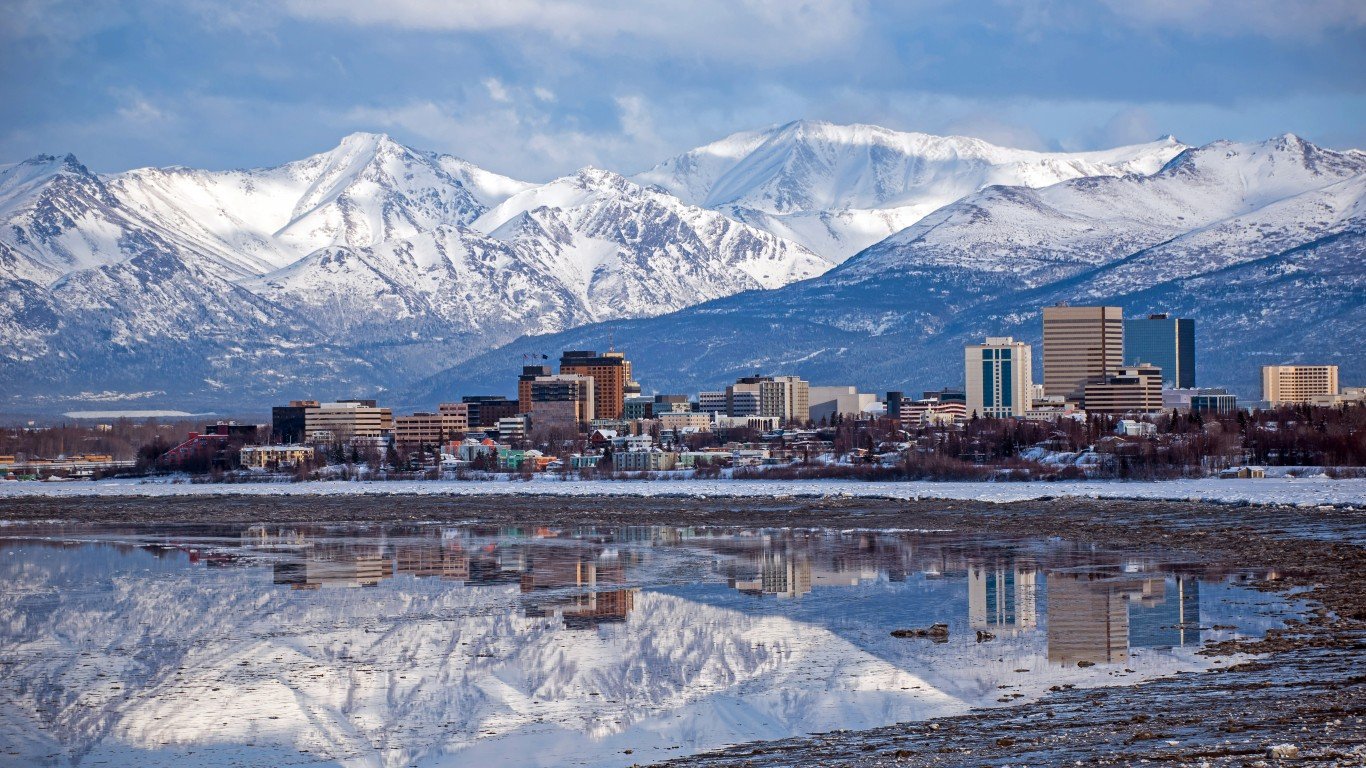
Alaska: Anchorage
COVID-19 cases as of January 18 in Anchorage: 99,054 (24,831.8 per 100,000)
COVID-19 cases as of January 18 in Alaska: 167,008 (22,829.5 per 100,000)
Peak pandemic unemployment in Anchorage: 14.8% (April 2020)
Anchorage population: 398,900 (15.2 per sq. mi.)
These are all the counties in Alaska where COVID-19 is slowing (and where it’s still getting worse).
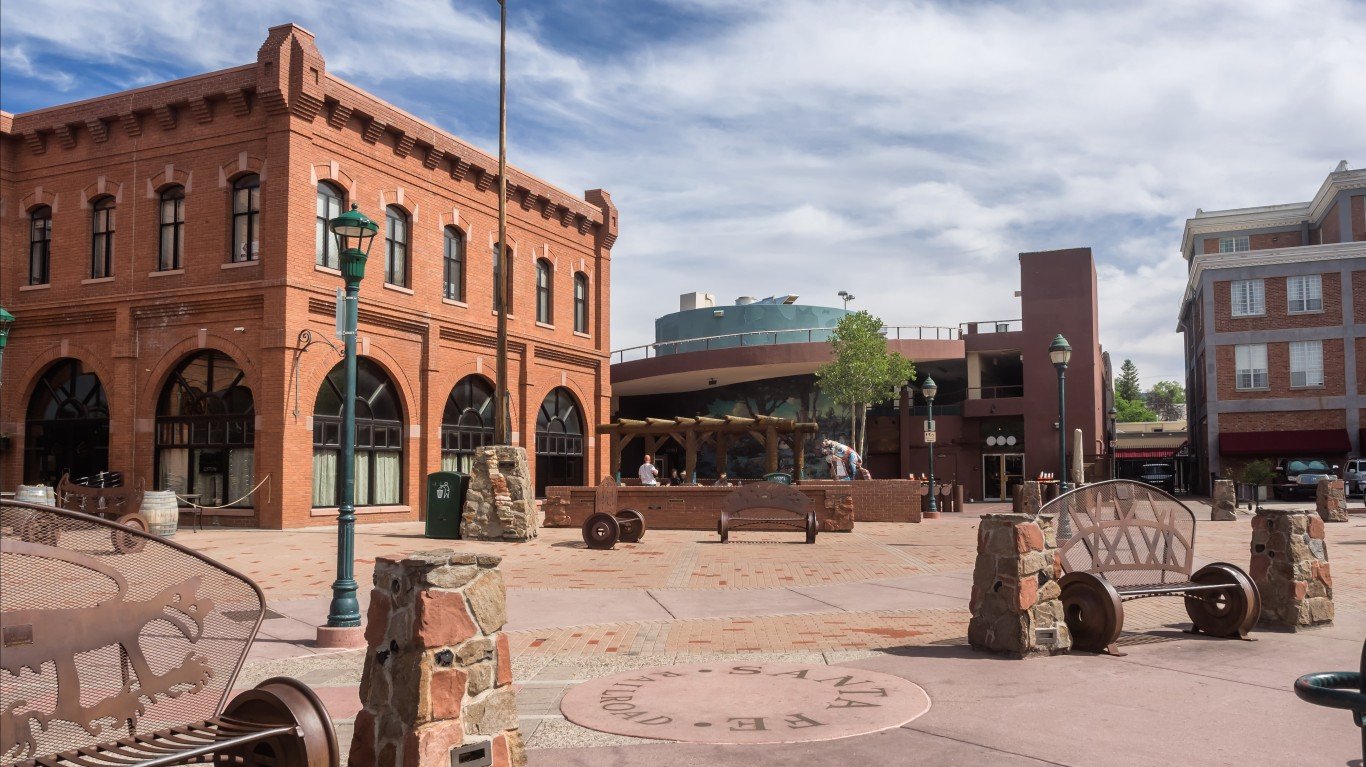
Arizona: Flagstaff
COVID-19 cases as of January 18 in Flagstaff: 32,490 (22,997.9 per 100,000)
COVID-19 cases as of January 18 in Arizona: 1,542,936 (21,197.9 per 100,000)
Peak pandemic unemployment in Flagstaff: 17.9% (April 2020)
Flagstaff population: 141,274 (7.6 per sq. mi.)

Arkansas: Jonesboro
COVID-19 cases as of January 18 in Jonesboro: 36,593 (27,882.3 per 100,000)
COVID-19 cases as of January 18 in Arkansas: 653,789 (21,664.4 per 100,000)
Peak pandemic unemployment in Jonesboro: 9.3% (April 2020)
Jonesboro population: 131,241 (89.5 per sq. mi.)
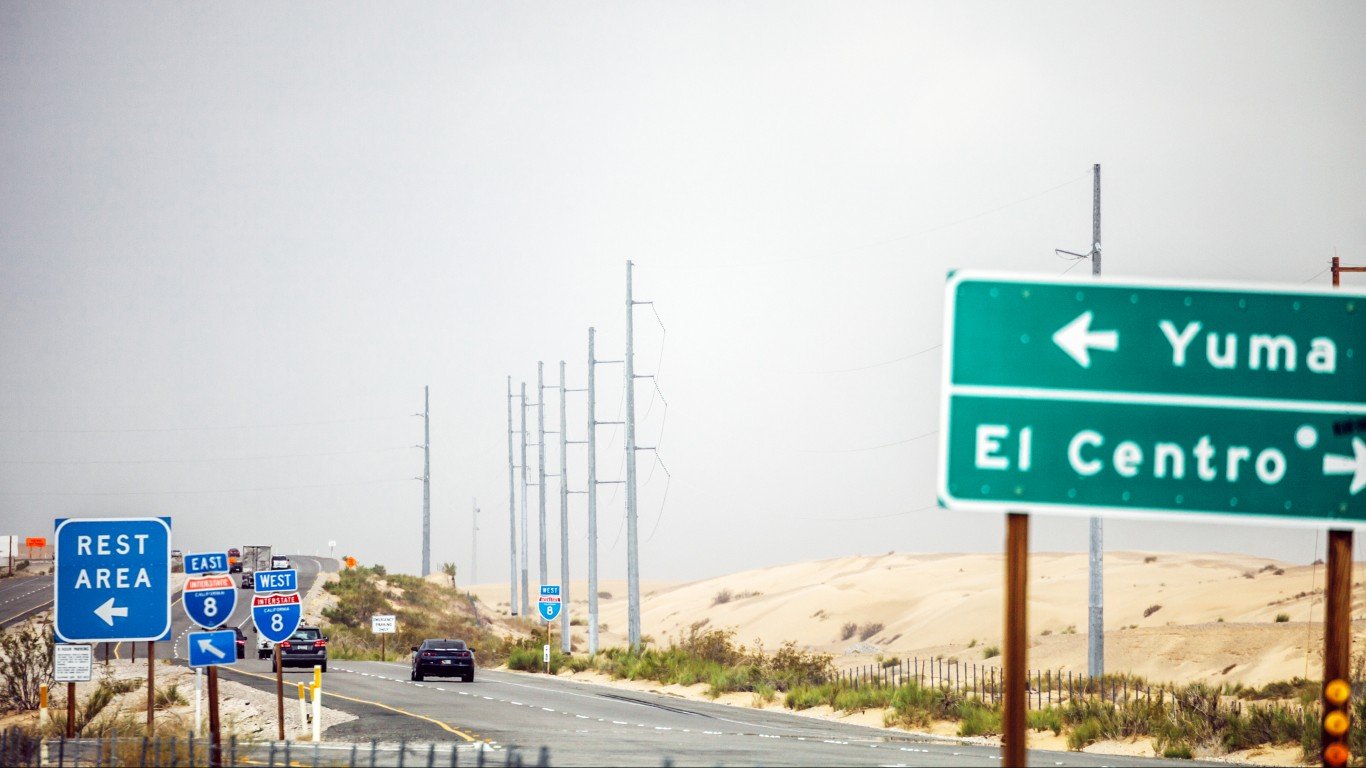
California: El Centro
COVID-19 cases as of January 18 in El Centro: 47,613 (26,349.1 per 100,000)
COVID-19 cases as of January 18 in California: 6,670,139 (16,881.2 per 100,000)
Peak pandemic unemployment in El Centro: 30.0% (April 2020)
El Centro population: 180,701 (43.3 per sq. mi.)
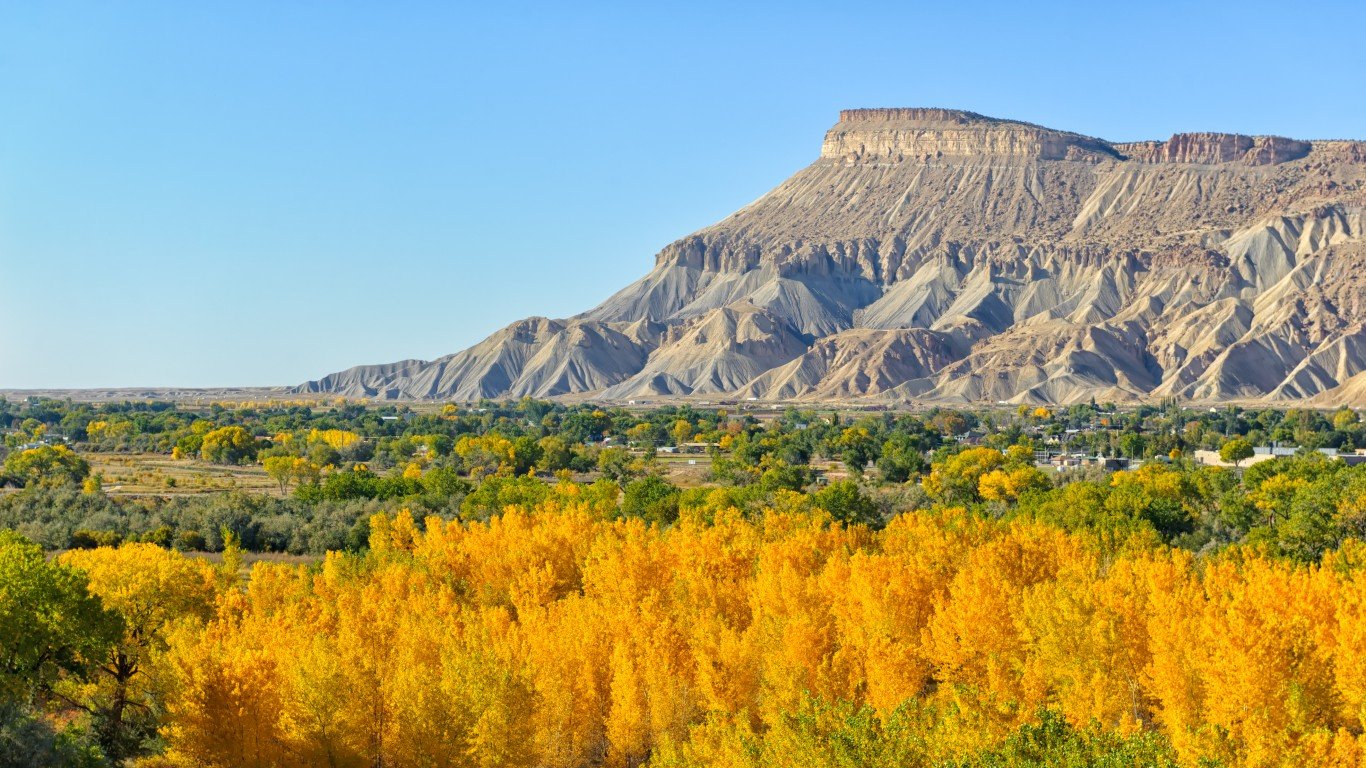
Colorado: Grand Junction
COVID-19 cases as of January 18 in Grand Junction: 32,998 (21,821.5 per 100,000)
COVID-19 cases as of January 18 in Colorado: 1,089,494 (18,919.0 per 100,000)
Peak pandemic unemployment in Grand Junction: 12.5% (April 2020)
Grand Junction population: 151,218 (45.4 per sq. mi.)

Connecticut: New Haven-Milford
COVID-19 cases as of January 18 in New Haven: 165,359 (19,283.6 per 100,000)
COVID-19 cases as of January 18 in Connecticut: 628,789 (17,636.4 per 100,000)
Peak pandemic unemployment in New Haven: 9.5% (July 2020)
New Haven population: 857,513 (1,418.5 per sq. mi.)
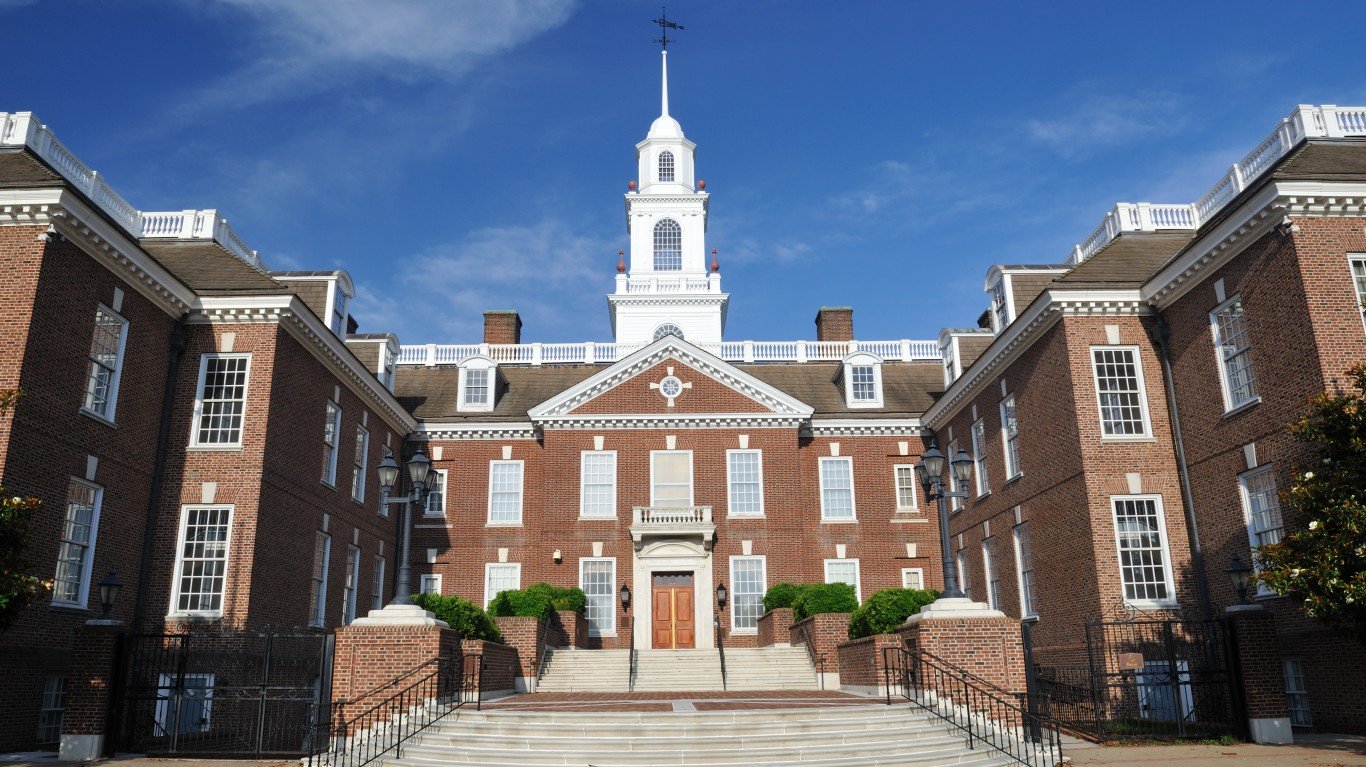
Delaware: Dover
COVID-19 cases as of January 18 in Dover: 40,997 (23,201.6 per 100,000)
COVID-19 cases as of January 18 in Delaware: 218,486 (22,437.3 per 100,000)
Peak pandemic unemployment in Dover: 17.3% (May 2020)
Dover population: 176,699 (301.4 per sq. mi.)
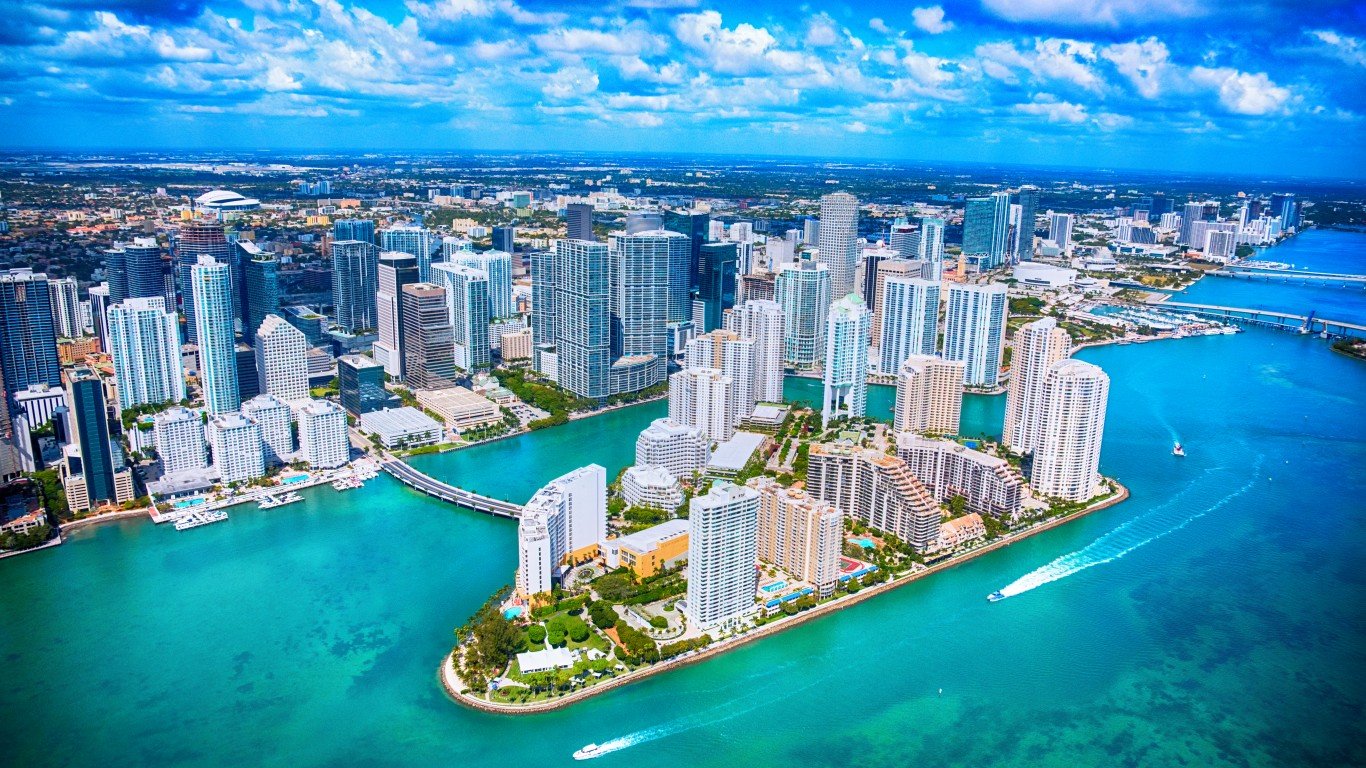
Florida: Miami-Fort Lauderdale-Pompano Beach
COVID-19 cases as of January 18 in Miami: 1,926,694 (31,633.6 per 100,000)
COVID-19 cases as of January 18 in Florida: 4,992,579 (23,245.4 per 100,000)
Peak pandemic unemployment in Miami: 13.8% (April 2020)
Miami population: 6,090,660 (1,199.6 per sq. mi.)
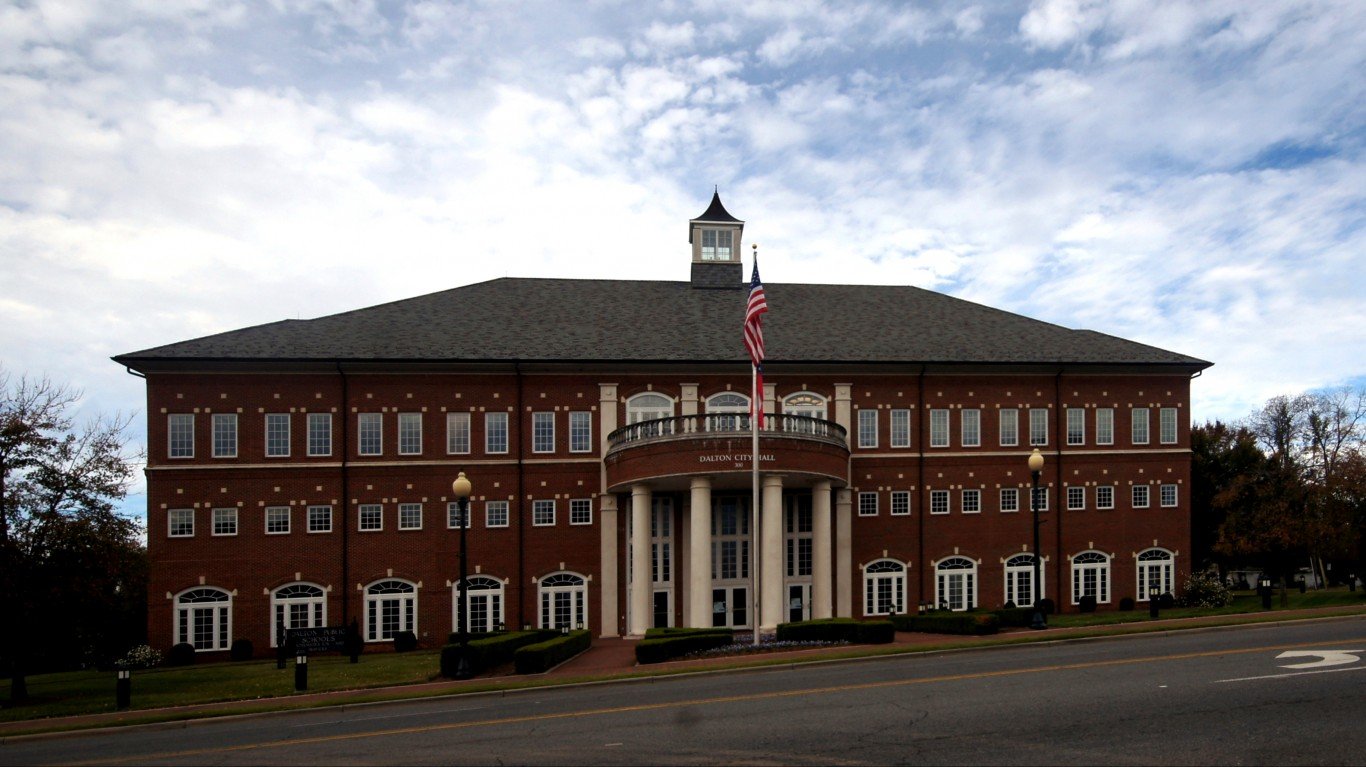
Georgia: Dalton
COVID-19 cases as of January 18 in Dalton: 36,340 (25,242.9 per 100,000)
COVID-19 cases as of January 18 in Georgia: 2,093,376 (19,716.4 per 100,000)
Peak pandemic unemployment in Dalton: 20.3% (April 2020)
Dalton population: 143,961 (226.7 per sq. mi.)

Hawaii: Urban Honolulu
COVID-19 cases as of January 18 in Urban Honolulu: 111,628 (11,334.9 per 100,000)
COVID-19 cases as of January 18 in Hawaii: 152,811 (10,792.7 per 100,000)
Peak pandemic unemployment in Urban Honolulu: 20.7% (April 2020)
Urban Honolulu population: 984,821 (1,639.3 per sq. mi.)
These are all the counties in Hawaii where COVID-19 is slowing (and where it’s still getting worse).
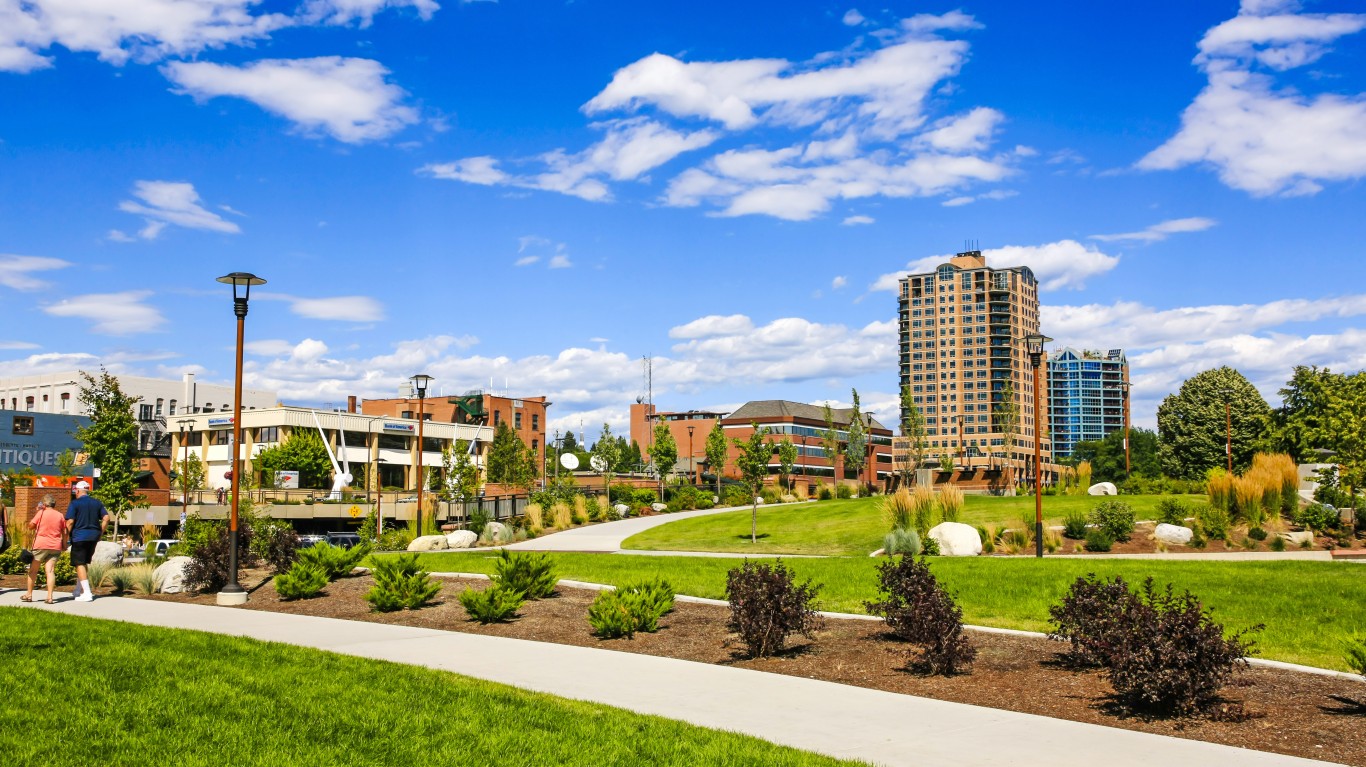
Idaho: Coeur d’Alene
COVID-19 cases as of January 18 in Coeur d’Alene: 33,608 (21,362.6 per 100,000)
COVID-19 cases as of January 18 in Idaho: 336,424 (18,825.5 per 100,000)
Peak pandemic unemployment in Coeur d’Alene: 17.2% (April 2020)
Coeur d’Alene population: 157,322 (126.5 per sq. mi.)
These are all the counties in Idaho where COVID-19 is slowing (and where it’s still getting worse).
Illinois: Danville
COVID-19 cases as of January 18 in Danville: 22,635 (29,182.7 per 100,000)
COVID-19 cases as of January 18 in Illinois: 2,560,001 (20,202.3 per 100,000)
Peak pandemic unemployment in Danville: 18.4% (April 2020)
Danville population: 77,563 (86.3 per sq. mi.)
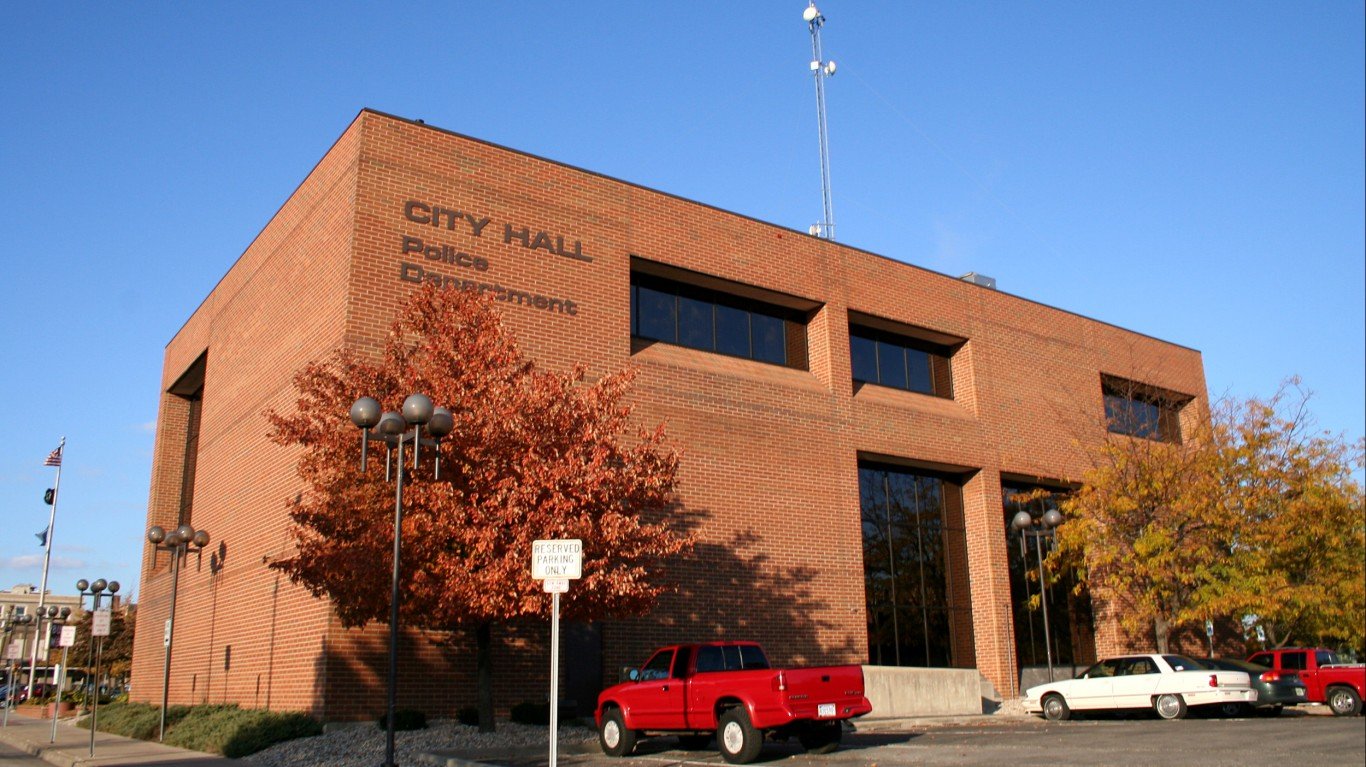
Indiana: Kokomo
COVID-19 cases as of January 18 in Kokomo: 20,594 (25,013.7 per 100,000)
COVID-19 cases as of January 18 in Indiana: 1,410,021 (20,944.4 per 100,000)
Peak pandemic unemployment in Kokomo: 33.8% (April 2020)
Kokomo population: 82,331 (280.9 per sq. mi.)
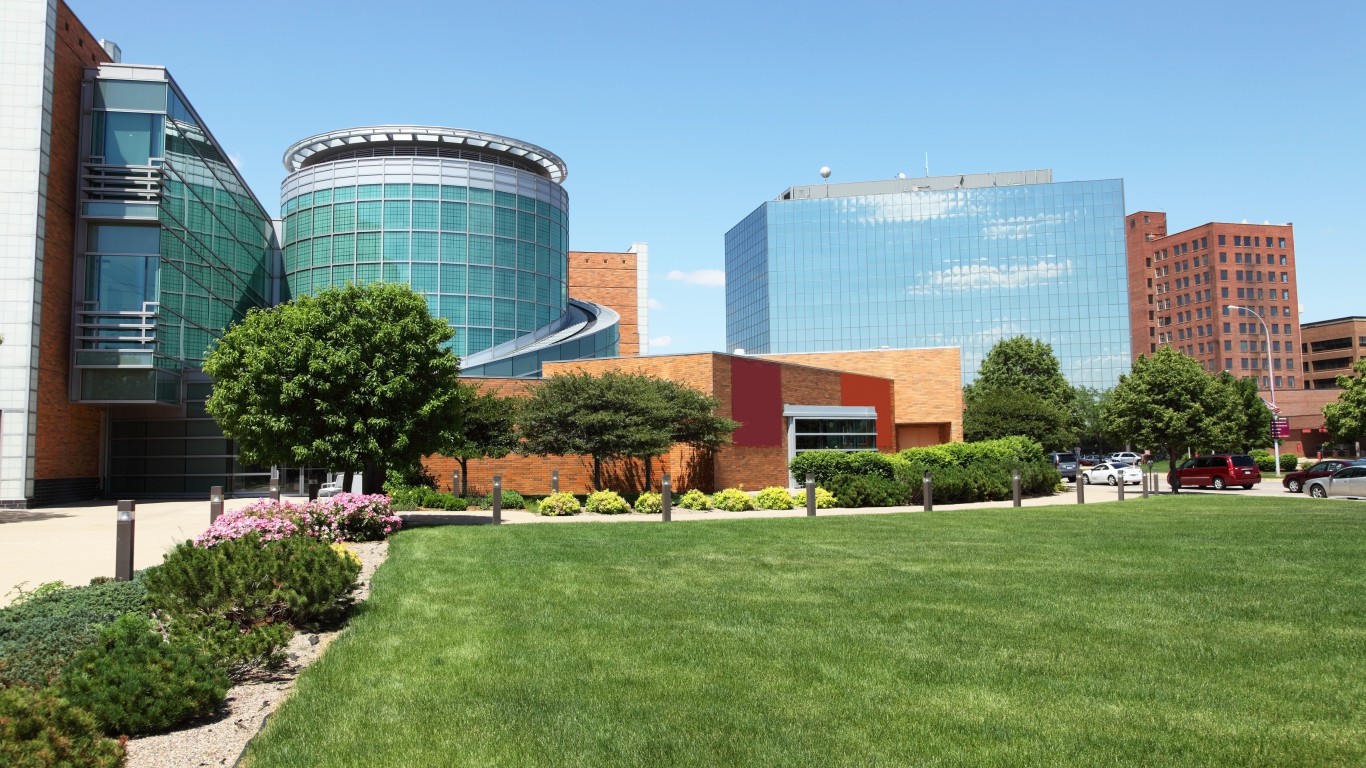
Iowa: Sioux City, IA-NE-SD
COVID-19 cases as of January 18 in Sioux City: 33,785 (23,486.9 per 100,000)
COVID-19 cases as of January 18 in Iowa: 631,301 (20,009.1 per 100,000)
Peak pandemic unemployment in Sioux City: 9.8% (April 2020)
Sioux City population: 143,846 (69.4 per sq. mi.)
These are all the counties in Iowa where COVID-19 is slowing (and where it’s still getting worse).

Kansas: Wichita
COVID-19 cases as of January 18 in Wichita: 140,762 (22,073.7 per 100,000)
COVID-19 cases as of January 18 in Kansas: 601,859 (20,658.9 per 100,000)
Peak pandemic unemployment in Wichita: 18.2% (April 2020)
Wichita population: 637,690 (153.7 per sq. mi.)
These are all the counties in Kansas where COVID-19 is slowing (and where it’s still getting worse).
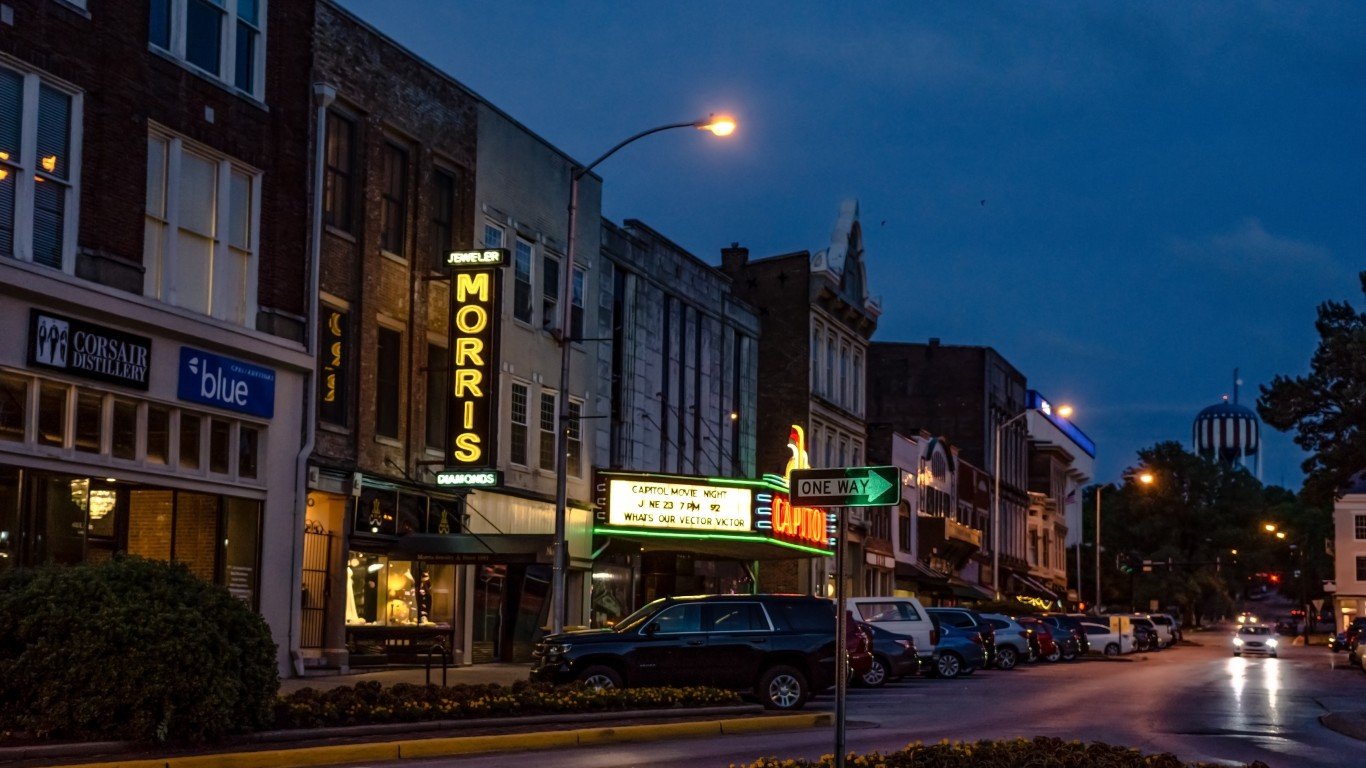
Kentucky: Bowling Green
COVID-19 cases as of January 18 in Bowling Green: 42,236 (24,204.3 per 100,000)
COVID-19 cases as of January 18 in Kentucky: 962,007 (21,532.6 per 100,000)
Peak pandemic unemployment in Bowling Green: 18.8% (April 2020)
Bowling Green population: 174,498 (108.1 per sq. mi.)

Louisiana: Monroe
COVID-19 cases as of January 18 in Monroe: 48,187 (23,684.1 per 100,000)
COVID-19 cases as of January 18 in Louisiana: 982,465 (21,133.8 per 100,000)
Peak pandemic unemployment in Monroe: 12.8% (April 2020)
Monroe population: 203,457 (89.1 per sq. mi.)

Maine: Lewiston-Auburn
COVID-19 cases as of January 18 in Lewiston: 16,454 (15,291.5 per 100,000)
COVID-19 cases as of January 18 in Maine: 159,498 (11,865.5 per 100,000)
Peak pandemic unemployment in Lewiston: 10.3% (July 2020)
Lewiston population: 107,602 (230.0 per sq. mi.)
These are all the counties in Maine where COVID-19 is slowing (and where it’s still getting worse).

Maryland: Hagerstown-Martinsburg, MD-WV
COVID-19 cases as of January 18 in Hagerstown: 62,959 (22,235.4 per 100,000)
COVID-19 cases as of January 18 in Maryland: 881,922 (14,587.6 per 100,000)
Peak pandemic unemployment in Hagerstown: 12.0% (April 2020)
Hagerstown population: 283,147 (280.9 per sq. mi.)

Massachusetts: Springfield
COVID-19 cases as of January 18 in Springfield: 136,210 (19,473.0 per 100,000)
COVID-19 cases as of January 18 in Massachusetts: 1,411,613 (20,480.4 per 100,000)
Peak pandemic unemployment in Springfield: 17.1% (June 2020)
Springfield population: 699,480 (379.4 per sq. mi.)

Michigan: Grand Rapids-Kentwood
COVID-19 cases as of January 18 in Grand Rapids: 224,767 (21,156.7 per 100,000)
COVID-19 cases as of January 18 in Michigan: 1,958,496 (19,610.7 per 100,000)
Peak pandemic unemployment in Grand Rapids: 22.3% (April 2020)
Grand Rapids population: 1,062,392 (395.4 per sq. mi.)
Minnesota: St. Cloud
COVID-19 cases as of January 18 in St. Cloud: 50,931 (25,647.5 per 100,000)
COVID-19 cases as of January 18 in Minnesota: 1,126,697 (19,978.2 per 100,000)
Peak pandemic unemployment in St. Cloud: 9.4% (May 2020)
St. Cloud population: 198,581 (113.4 per sq. mi.)
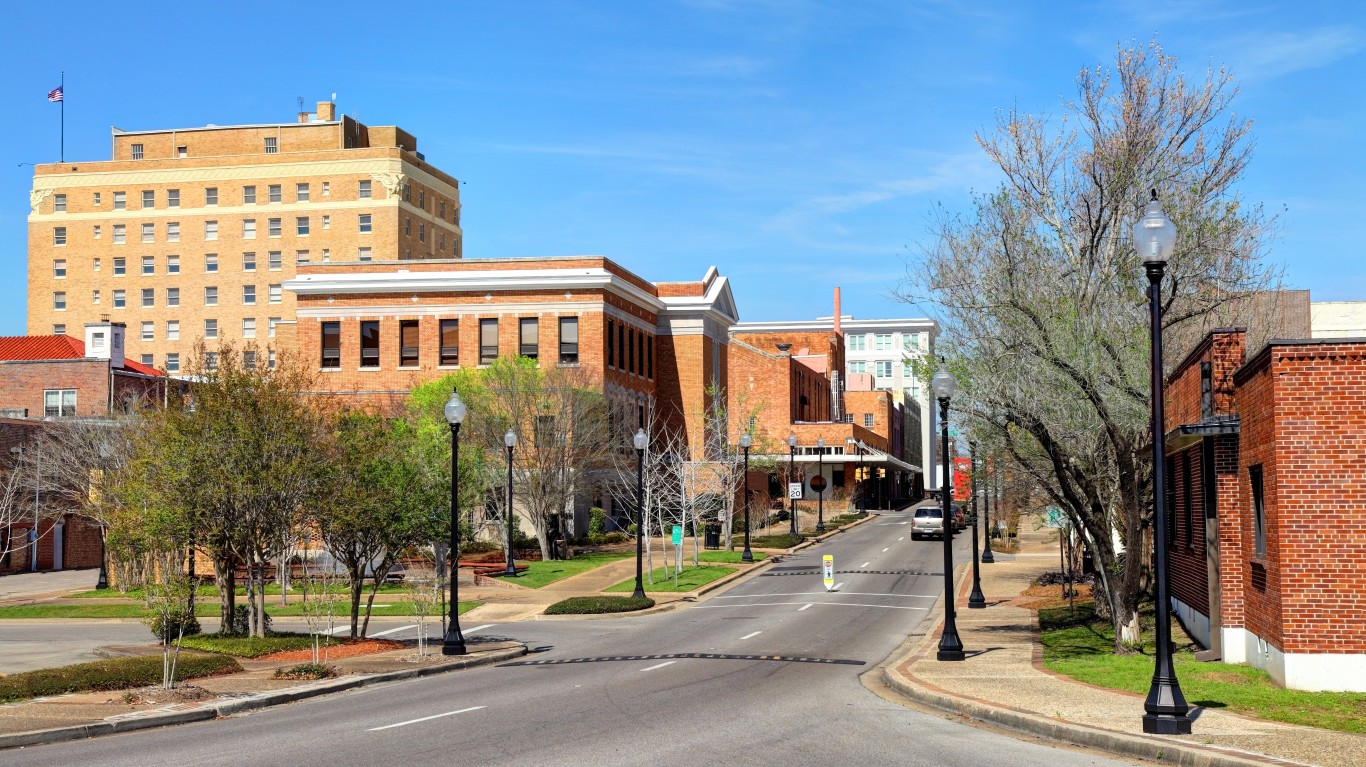
Mississippi: Hattiesburg
COVID-19 cases as of January 18 in Hattiesburg: 37,775 (22,461.5 per 100,000)
COVID-19 cases as of January 18 in Mississippi: 625,328 (21,011.3 per 100,000)
Peak pandemic unemployment in Hattiesburg: 13.3% (April 2020)
Hattiesburg population: 168,177 (83.1 per sq. mi.)

Missouri: Jefferson City
COVID-19 cases as of January 18 in Jefferson City: 31,432 (20,778.3 per 100,000)
COVID-19 cases as of January 18 in Missouri: 1,151,458 (18,761.2 per 100,000)
Peak pandemic unemployment in Jefferson City: 7.1% (April 2020)
Jefferson City population: 151,273 (67.3 per sq. mi.)
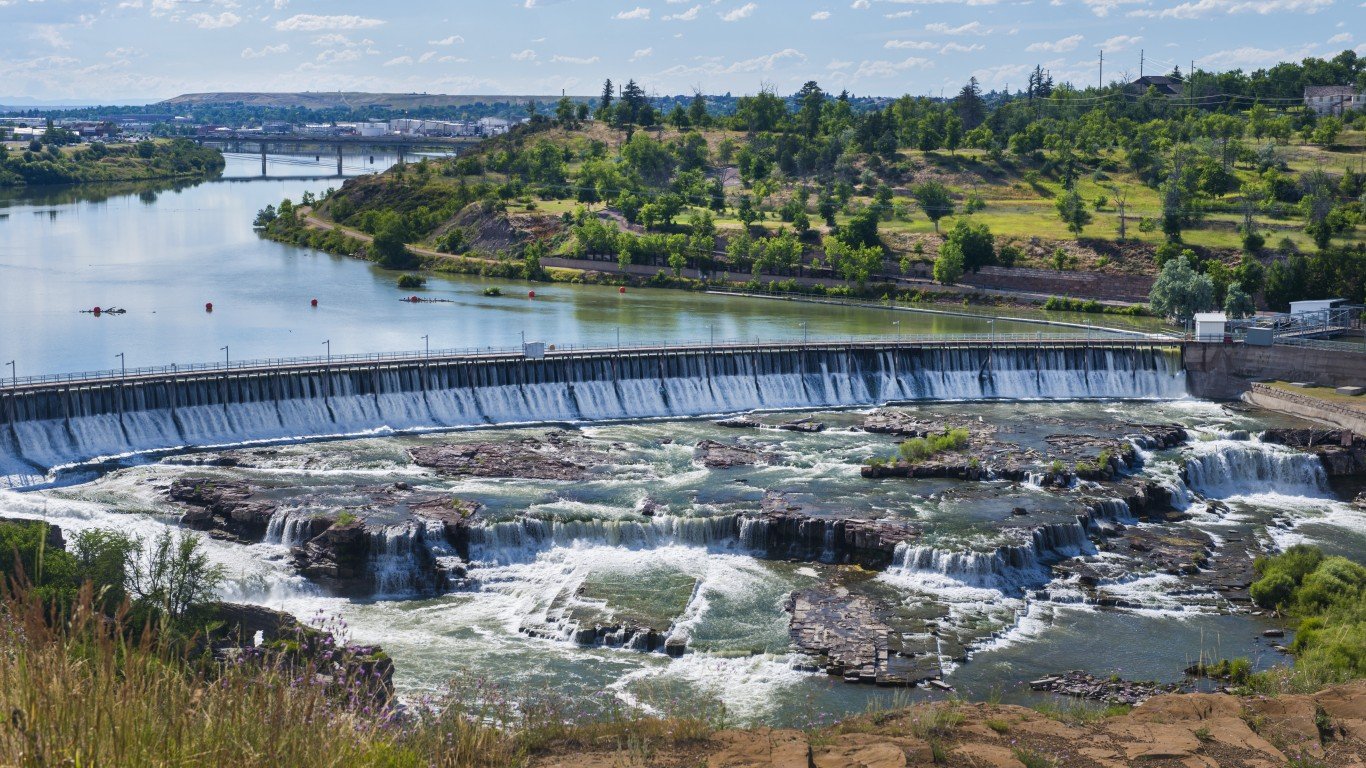
Montana: Great Falls
COVID-19 cases as of January 18 in Great Falls: 17,764 (21,762.9 per 100,000)
COVID-19 cases as of January 18 in Montana: 209,900 (19,639.3 per 100,000)
Peak pandemic unemployment in Great Falls: 12.6% (April 2020)
Great Falls population: 81,625 (30.3 per sq. mi.)

Nebraska: Omaha-Council Bluffs, NE-IA
COVID-19 cases as of January 18 in Omaha: 198,590 (21,313.0 per 100,000)
COVID-19 cases as of January 18 in Nebraska: 383,915 (19,846.6 per 100,000)
Peak pandemic unemployment in Omaha: 10.2% (April 2020)
Omaha population: 931,779 (214.2 per sq. mi.)

Nevada: Carson City
COVID-19 cases as of January 18 in Carson City: 10,594 (19,341.6 per 100,000)
COVID-19 cases as of January 18 in Nevada: 565,911 (18,372.8 per 100,000)
Peak pandemic unemployment in Carson City: 21.0% (April 2020)
Carson City population: 54,773 (378.6 per sq. mi.)
These are all the counties in Nevada where COVID-19 is slowing (and where it’s still getting worse).

New Hampshire: Manchester-Nashua
COVID-19 cases as of January 18 in Manchester: 76,861 (18,608.8 per 100,000)
COVID-19 cases as of January 18 in New Hampshire: 233,508 (17,173.4 per 100,000)
Peak pandemic unemployment in Manchester: 17.5% (April 2020)
Manchester population: 413,035 (471.4 per sq. mi.)

New Jersey: Atlantic City-Hammonton
COVID-19 cases as of January 18 in Atlantic City: 59,079 (22,201.4 per 100,000)
COVID-19 cases as of January 18 in New Jersey: 1,939,089 (21,831.2 per 100,000)
Peak pandemic unemployment in Atlantic City: 35.2% (June 2020)
Atlantic City population: 266,105 (478.9 per sq. mi.)
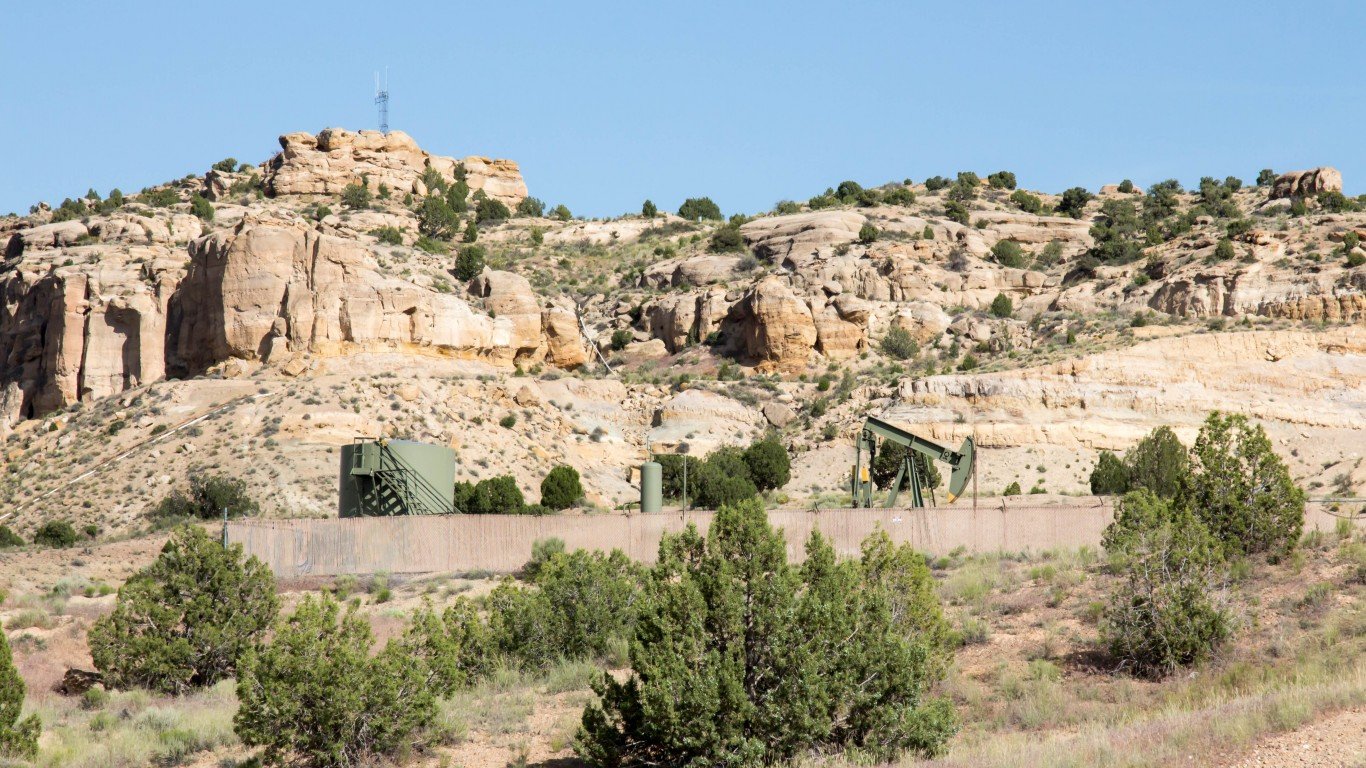
New Mexico: Farmington
COVID-19 cases as of January 18 in Farmington: 31,062 (24,552.0 per 100,000)
COVID-19 cases as of January 18 in New Mexico: 393,736 (18,777.7 per 100,000)
Peak pandemic unemployment in Farmington: 14.5% (July 2020)
Farmington population: 126,515 (22.9 per sq. mi.)
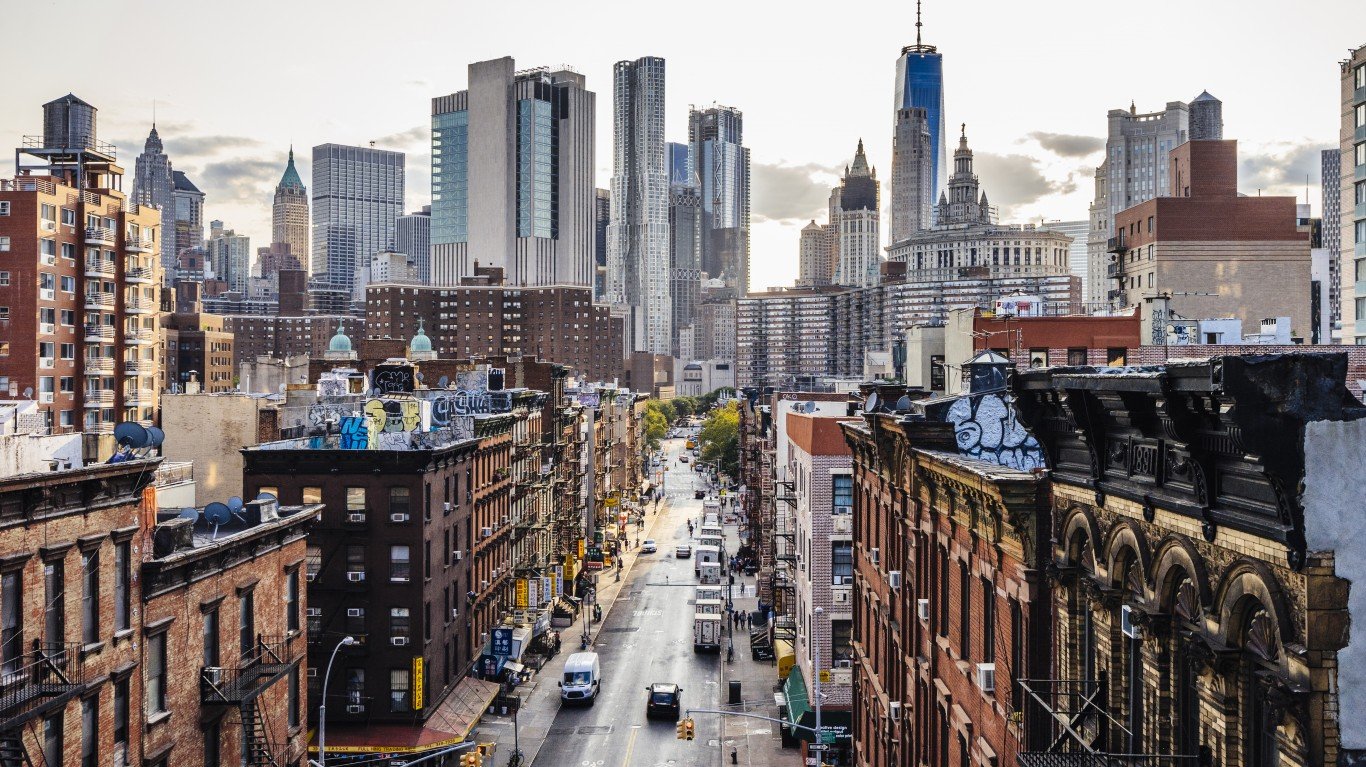
New York: New York-Newark-Jersey City, NY-NJ-PA
COVID-19 cases as of January 18 in New York: 4,608,228 (23,884.0 per 100,000)
COVID-19 cases as of January 18 in New York: 4,380,509 (22,517.8 per 100,000)
Peak pandemic unemployment in New York: 17.2% (June 2020)
New York population: 19,294,236 (2,885.4 per sq. mi.)
North Carolina: Burlington
COVID-19 cases as of January 18 in Burlington: 35,952 (22,012.7 per 100,000)
COVID-19 cases as of January 18 in North Carolina: 1,975,543 (18,836.1 per 100,000)
Peak pandemic unemployment in Burlington: 13.3% (April 2020)
Burlington population: 163,324 (385.3 per sq. mi.)
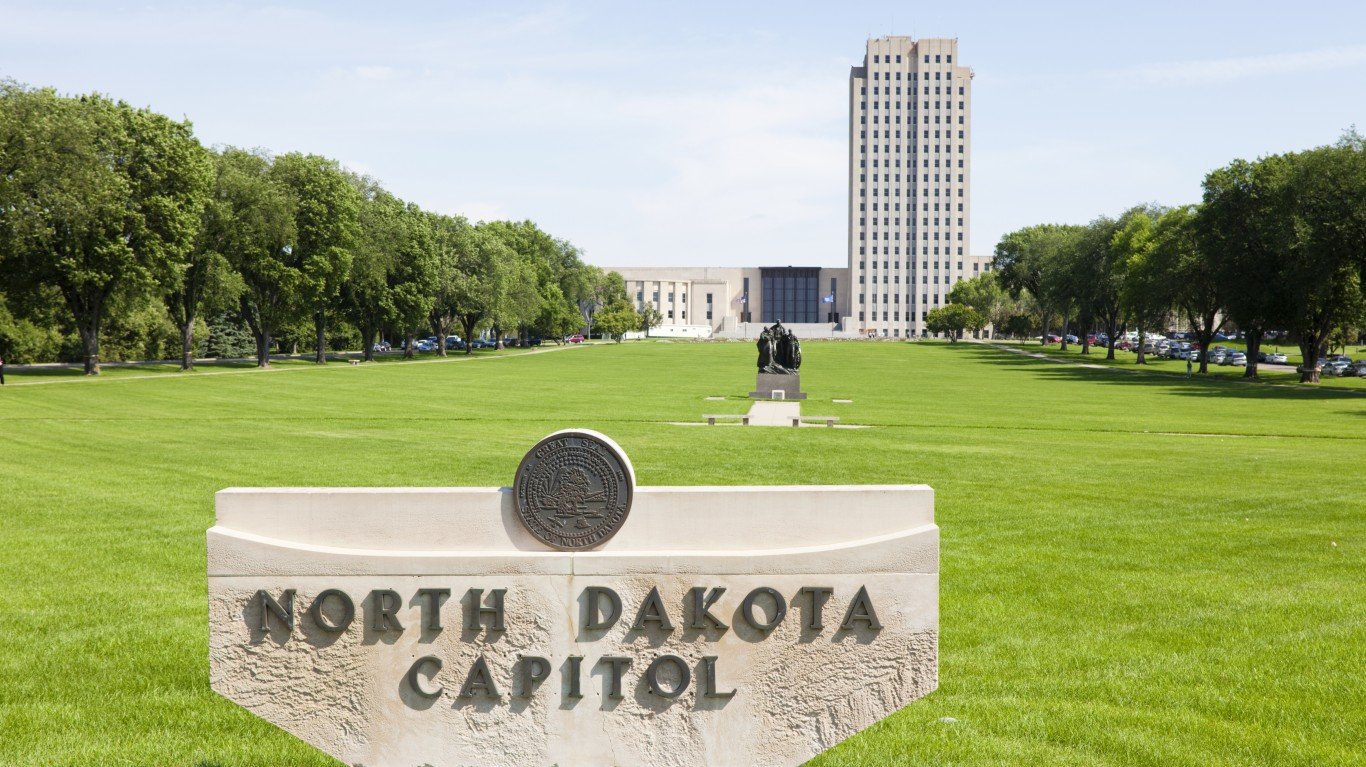
North Dakota: Bismarck
COVID-19 cases as of January 18 in Bismarck: 37,285 (29,242.4 per 100,000)
COVID-19 cases as of January 18 in North Dakota: 192,239 (25,226.2 per 100,000)
Peak pandemic unemployment in Bismarck: 9.5% (April 2020)
Bismarck population: 127,503 (29.8 per sq. mi.)
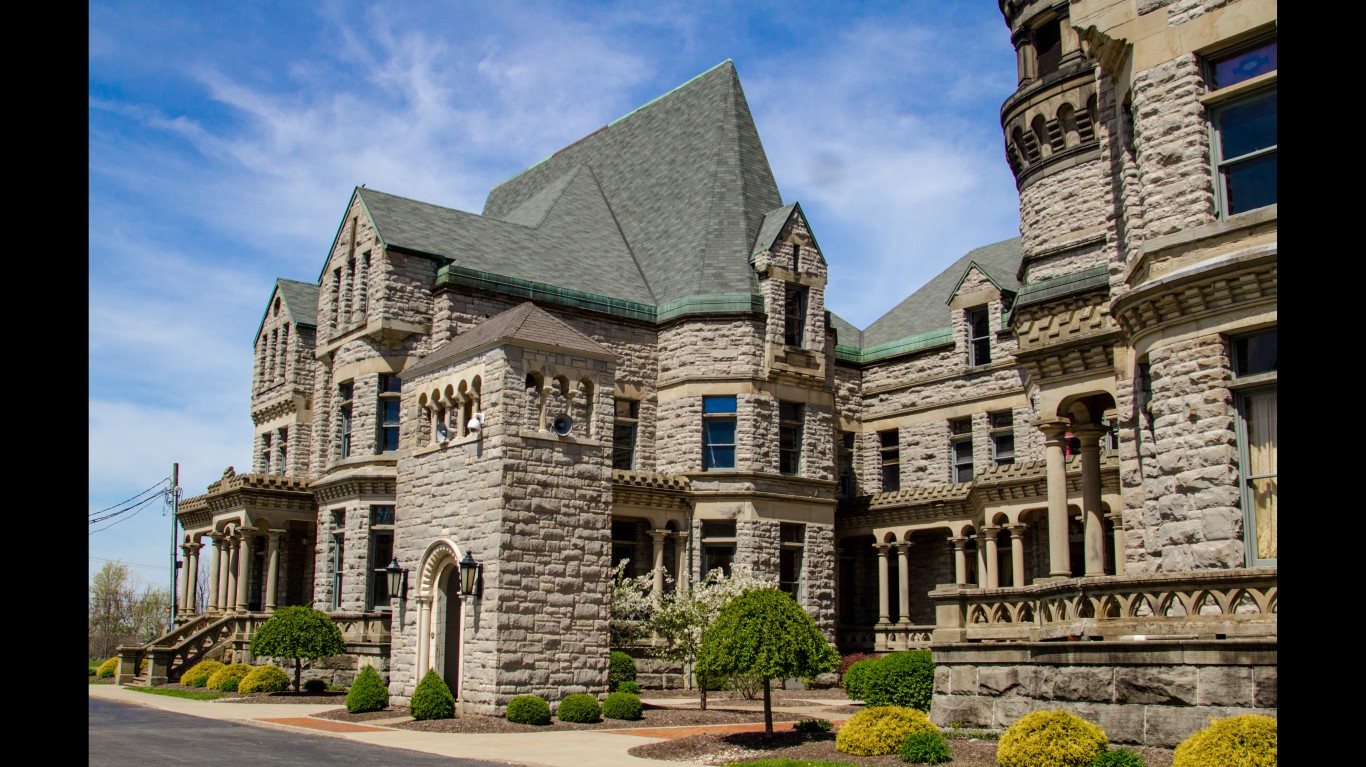
Ohio: Mansfield
COVID-19 cases as of January 18 in Mansfield: 26,755 (22,093.3 per 100,000)
COVID-19 cases as of January 18 in Ohio: 2,266,236 (19,387.6 per 100,000)
Peak pandemic unemployment in Mansfield: 20.4% (April 2020)
Mansfield population: 121,100 (244.5 per sq. mi.)
These are all the counties in Ohio where COVID-19 is slowing (and where it’s still getting worse).

Oklahoma: Lawton
COVID-19 cases as of January 18 in Lawton: 25,415 (19,914.6 per 100,000)
COVID-19 cases as of January 18 in Oklahoma: 796,987 (20,141.3 per 100,000)
Peak pandemic unemployment in Lawton: 19.5% (April 2020)
Lawton population: 127,620 (75.0 per sq. mi.)

Oregon: Bend
COVID-19 cases as of January 18 in Bend: 32,697 (17,555.3 per 100,000)
COVID-19 cases as of January 18 in Oregon: 504,732 (11,966.9 per 100,000)
Peak pandemic unemployment in Bend: 18.3% (April 2020)
Bend population: 186,251 (61.7 per sq. mi.)
These are all the counties in Oregon where COVID-19 is slowing (and where it’s still getting worse).
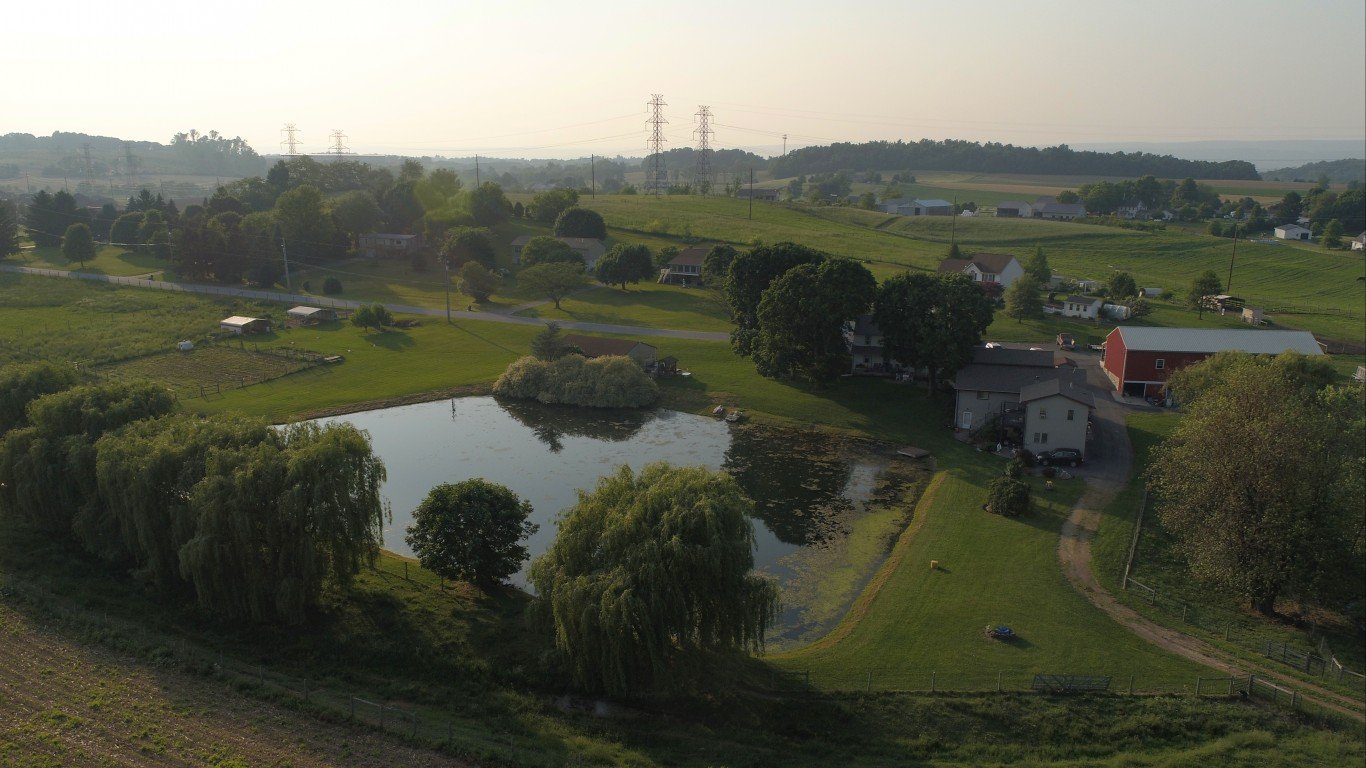
Pennsylvania: Lebanon
COVID-19 cases as of January 18 in Lebanon: 31,577 (22,598.7 per 100,000)
COVID-19 cases as of January 18 in Pennsylvania: 2,375,071 (18,552.4 per 100,000)
Peak pandemic unemployment in Lebanon: 14.1% (April 2020)
Lebanon population: 139,729 (386.2 per sq. mi.)

Rhode Island: Providence-Warwick, RI-MA
COVID-19 cases as of January 18 in Providence: 382,433 (23,632.2 per 100,000)
COVID-19 cases as of January 18 in Rhode Island: 296,304 (27,970.1 per 100,000)
Peak pandemic unemployment in Providence: 18.5% (April 2020)
Providence population: 1,618,268 (1,019.8 per sq. mi.)
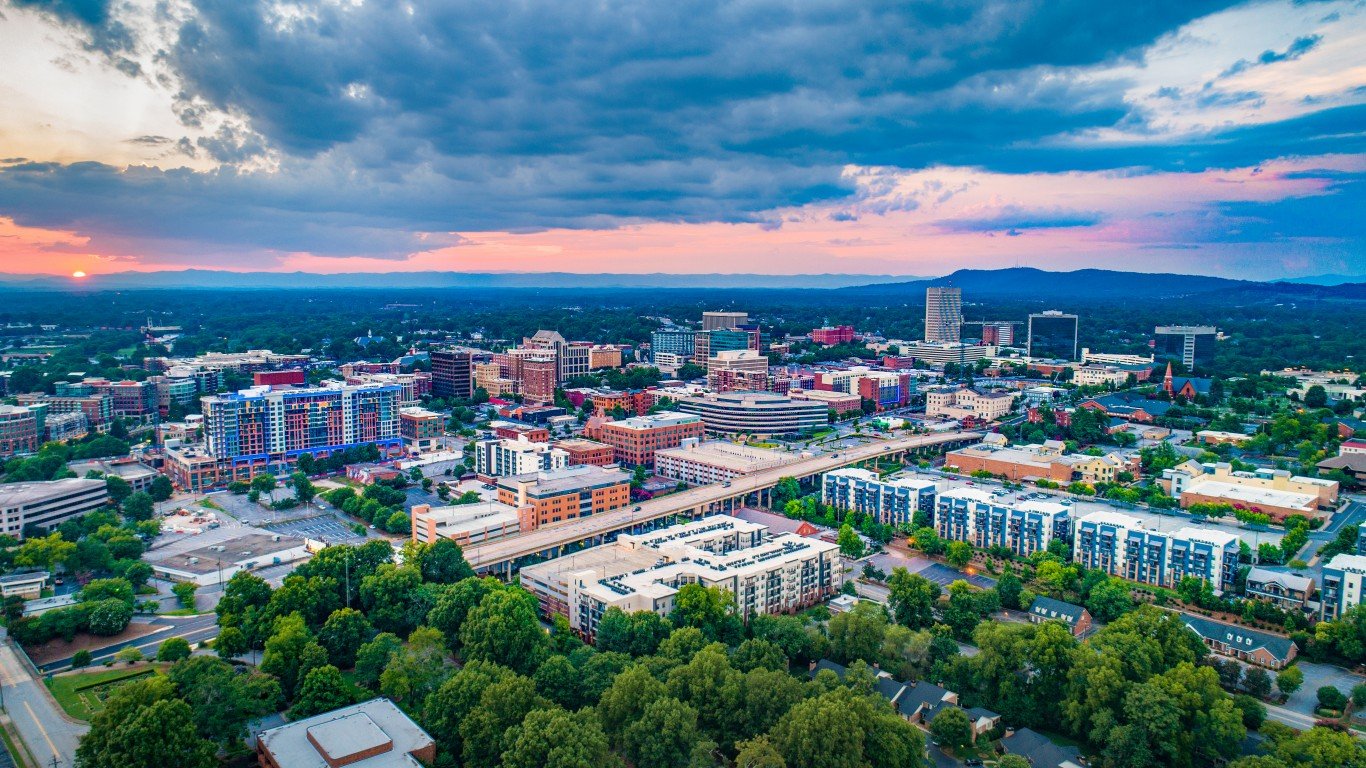
South Carolina: Greenville-Anderson
COVID-19 cases as of January 18 in Greenville: 227,046 (25,341.6 per 100,000)
COVID-19 cases as of January 18 in South Carolina: 1,129,096 (21,929.7 per 100,000)
Peak pandemic unemployment in Greenville: 12.5% (April 2020)
Greenville population: 895,942 (330.5 per sq. mi.)

South Dakota: Sioux Falls
COVID-19 cases as of January 18 in Sioux Falls: 66,871 (25,784.3 per 100,000)
COVID-19 cases as of January 18 in South Dakota: 200,496 (22,663.6 per 100,000)
Peak pandemic unemployment in Sioux Falls: 10.7% (April 2020)
Sioux Falls population: 259,348 (100.7 per sq. mi.)
Tennessee: Cleveland
COVID-19 cases as of January 18 in Cleveland: 28,815 (23,510.4 per 100,000)
COVID-19 cases as of January 18 in Tennessee: 1,597,002 (23,385.0 per 100,000)
Peak pandemic unemployment in Cleveland: 14.3% (April 2020)
Cleveland population: 122,563 (160.5 per sq. mi.)
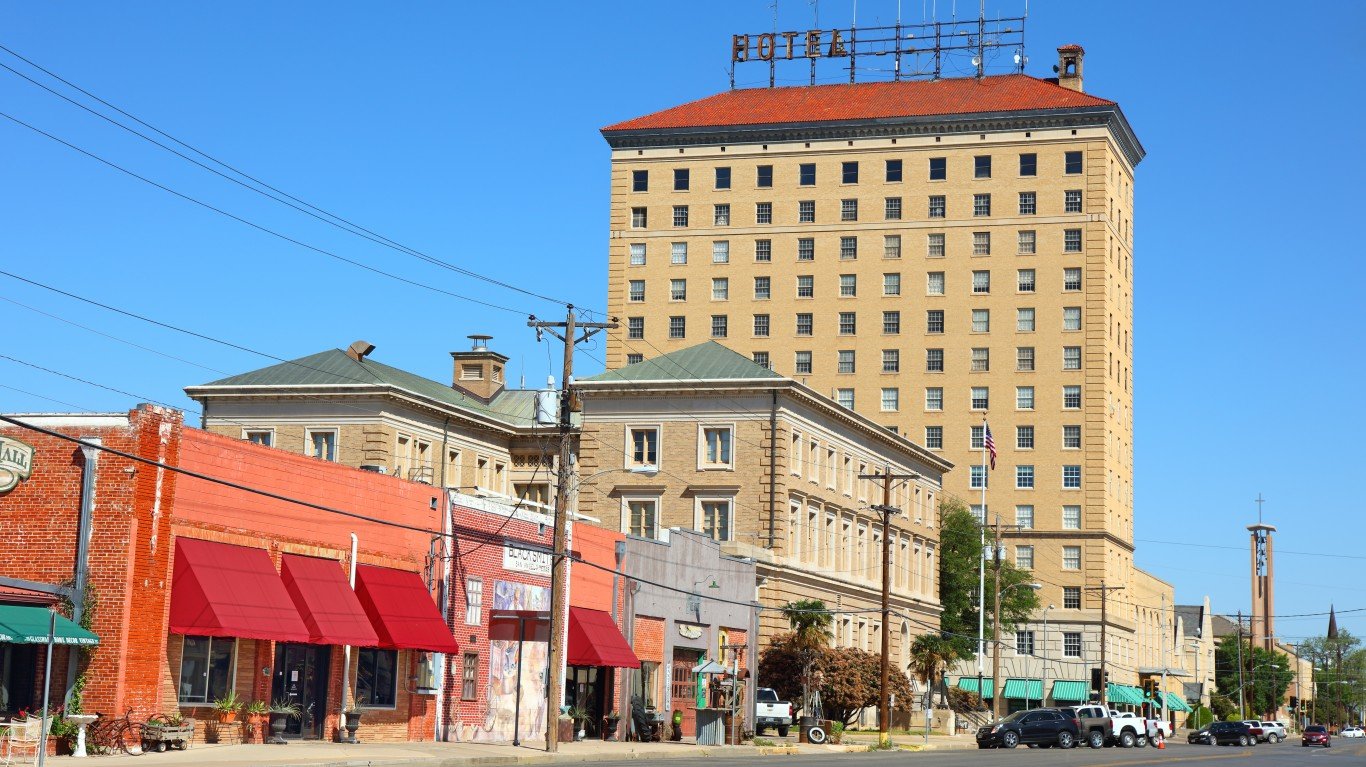
Texas: San Angelo
COVID-19 cases as of January 18 in San Angelo: 33,351 (28,266.9 per 100,000)
COVID-19 cases as of January 18 in Texas: 5,297,814 (18,270.9 per 100,000)
Peak pandemic unemployment in San Angelo: 11.1% (April 2020)
San Angelo population: 117,986 (77.5 per sq. mi.)
These are all the counties in Texas where COVID-19 is slowing (and where it’s still getting worse).
Utah: Provo-Orem
COVID-19 cases as of January 18 in Provo: 165,191 (26,782.3 per 100,000)
COVID-19 cases as of January 18 in Utah: 739,206 (23,057.3 per 100,000)
Peak pandemic unemployment in Provo: 8.1% (April 2020)
Provo population: 616,791 (114.3 per sq. mi.)
These are all the counties in Utah where COVID-19 is slowing (and where it’s still getting worse).
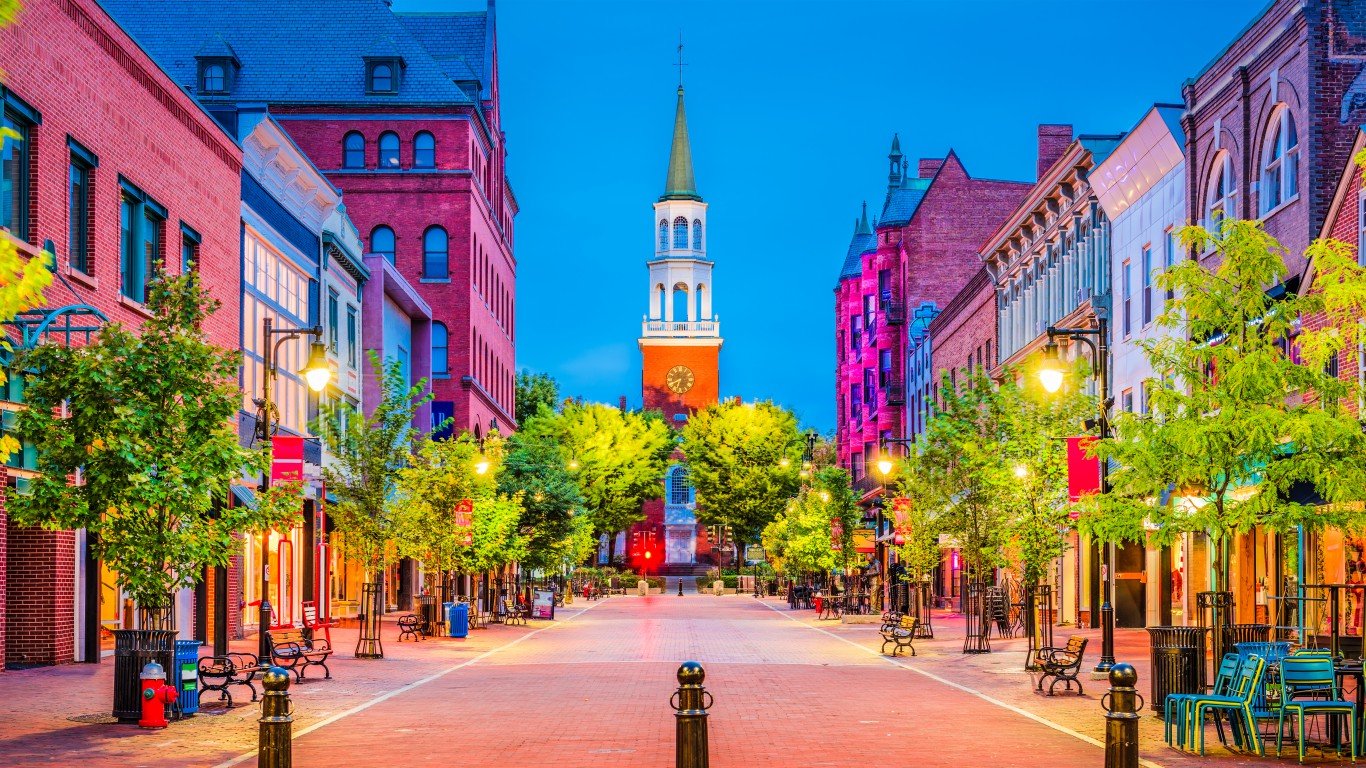
Vermont: Burlington-South Burlington
COVID-19 cases as of January 18 in Burlington: 27,195 (12,430.1 per 100,000)
COVID-19 cases as of January 18 in Vermont: 77,375 (12,400.1 per 100,000)
Peak pandemic unemployment in Burlington: 14.8% (April 2020)
Burlington population: 218,784 (174.7 per sq. mi.)
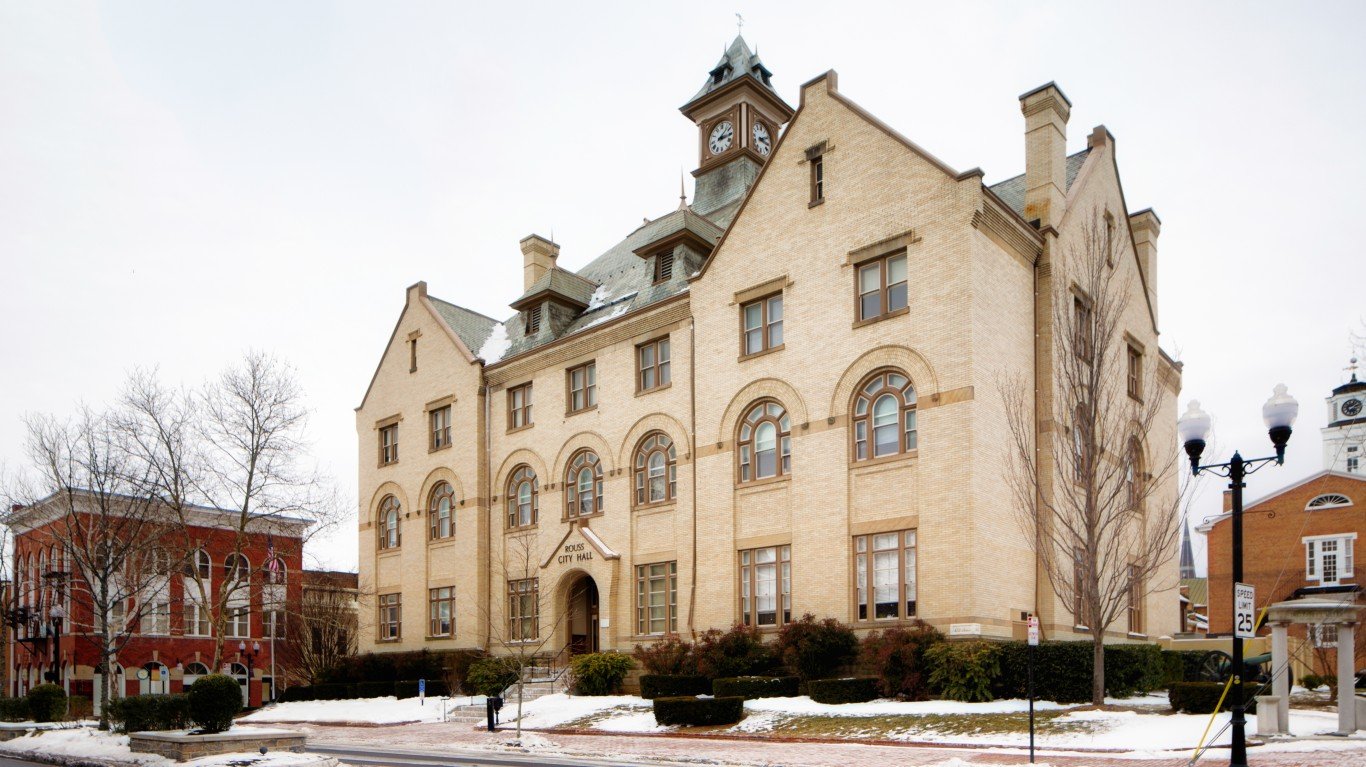
Virginia: Winchester, VA-WV
COVID-19 cases as of January 18 in Winchester: 27,066 (19,667.1 per 100,000)
COVID-19 cases as of January 18 in Virginia: 1,351,430 (15,833.0 per 100,000)
Peak pandemic unemployment in Winchester: 10.5% (April 2020)
Winchester population: 137,621 (129.5 per sq. mi.)
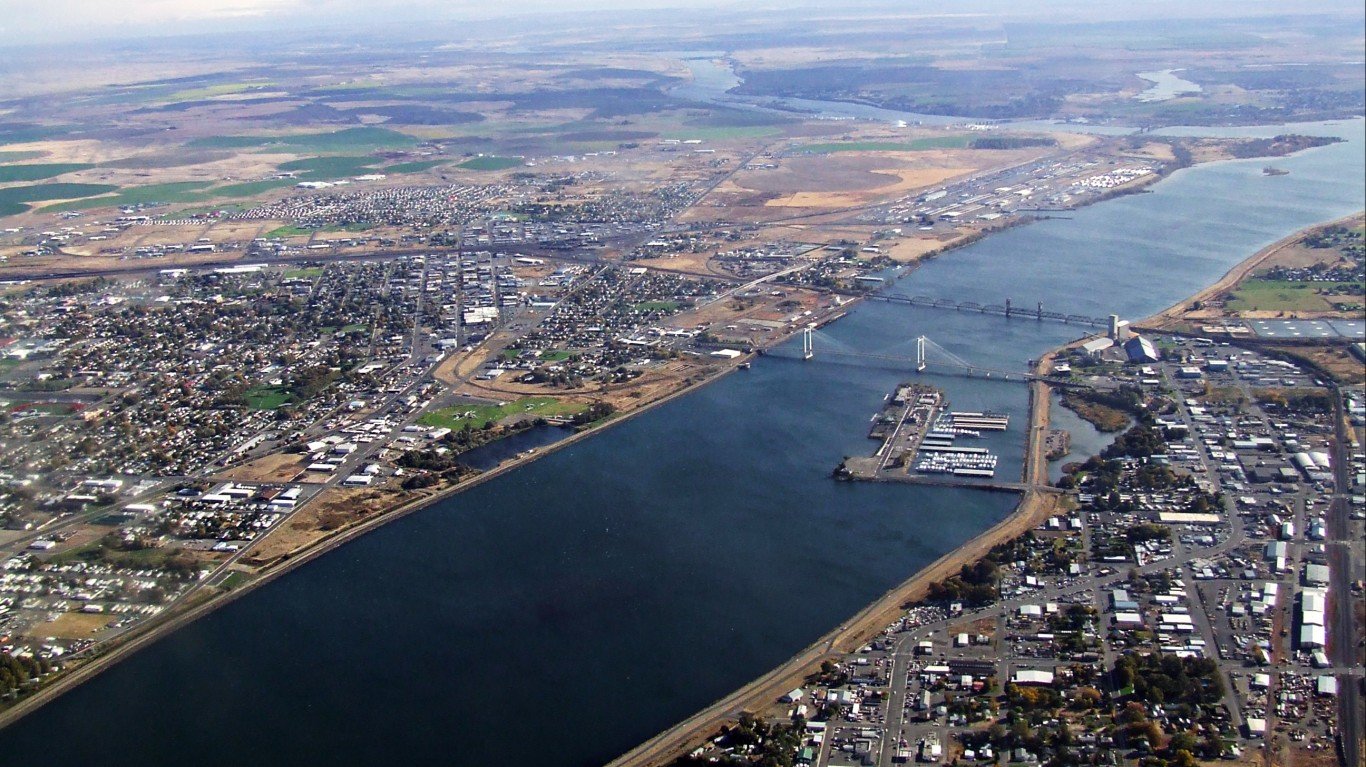
Washington: Kennewick-Richland
COVID-19 cases as of January 18 in Kennewick: 60,218 (20,798.8 per 100,000)
COVID-19 cases as of January 18 in Washington: 1,025,322 (13,464.7 per 100,000)
Peak pandemic unemployment in Kennewick: 13.7% (April 2020)
Kennewick population: 289,527 (98.4 per sq. mi.)
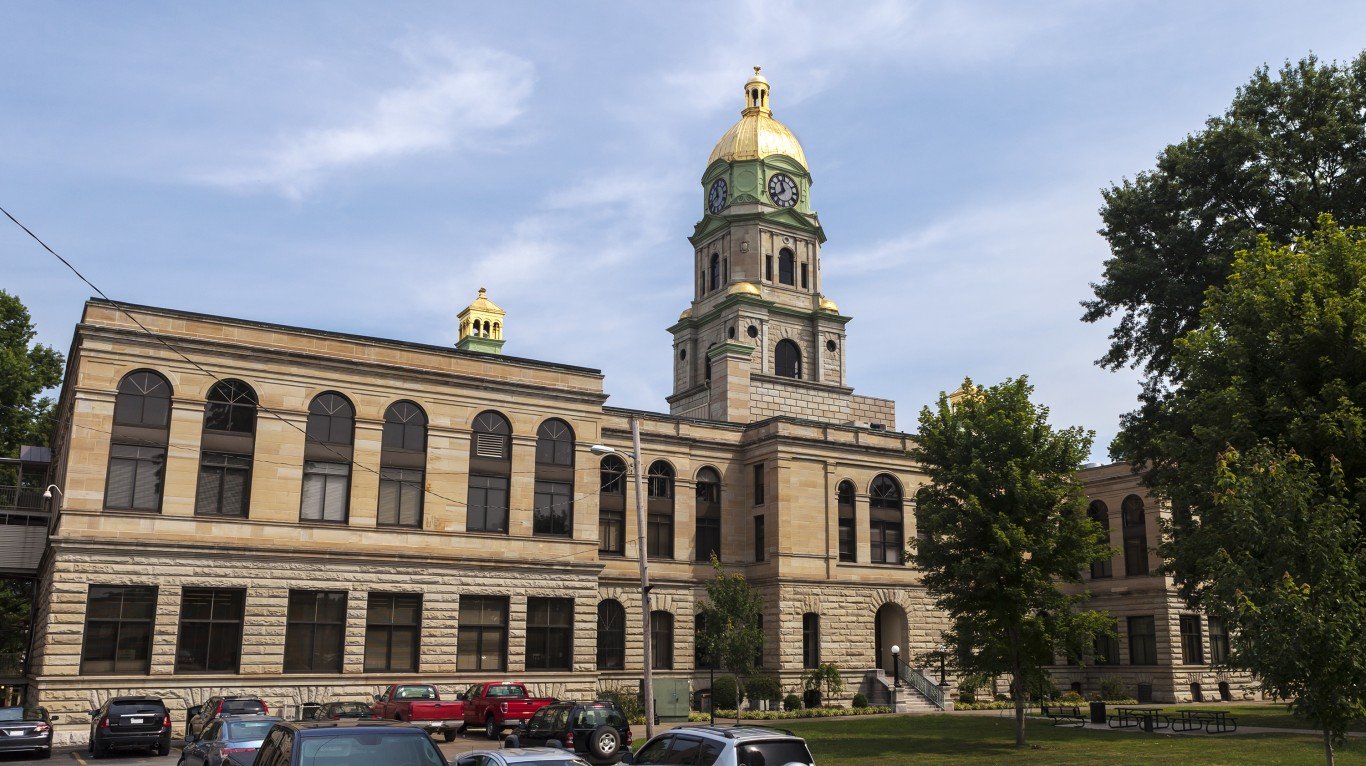
West Virginia: Huntington-Ashland, WV-KY-OH
COVID-19 cases as of January 18 in Huntington: 79,117 (21,865.7 per 100,000)
COVID-19 cases as of January 18 in West Virginia: 372,674 (20,794.8 per 100,000)
Peak pandemic unemployment in Huntington: 17.2% (April 2020)
Huntington population: 361,832 (144.7 per sq. mi.)
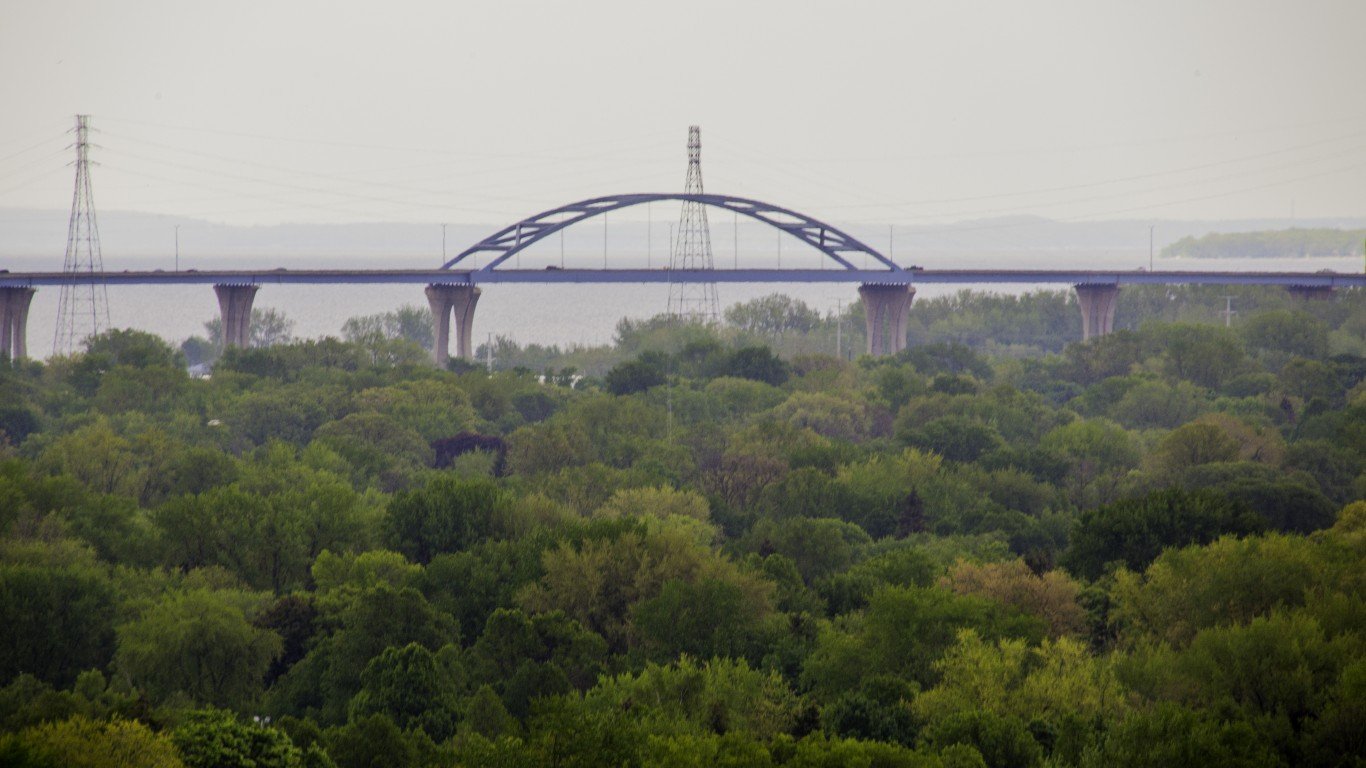
Wisconsin: Green Bay
COVID-19 cases as of January 18 in Green Bay: 81,683 (25,573.8 per 100,000)
COVID-19 cases as of January 18 in Wisconsin: 1,269,899 (21,810.4 per 100,000)
Peak pandemic unemployment in Green Bay: 13.3% (April 2020)
Green Bay population: 319,401 (170.8 per sq. mi.)
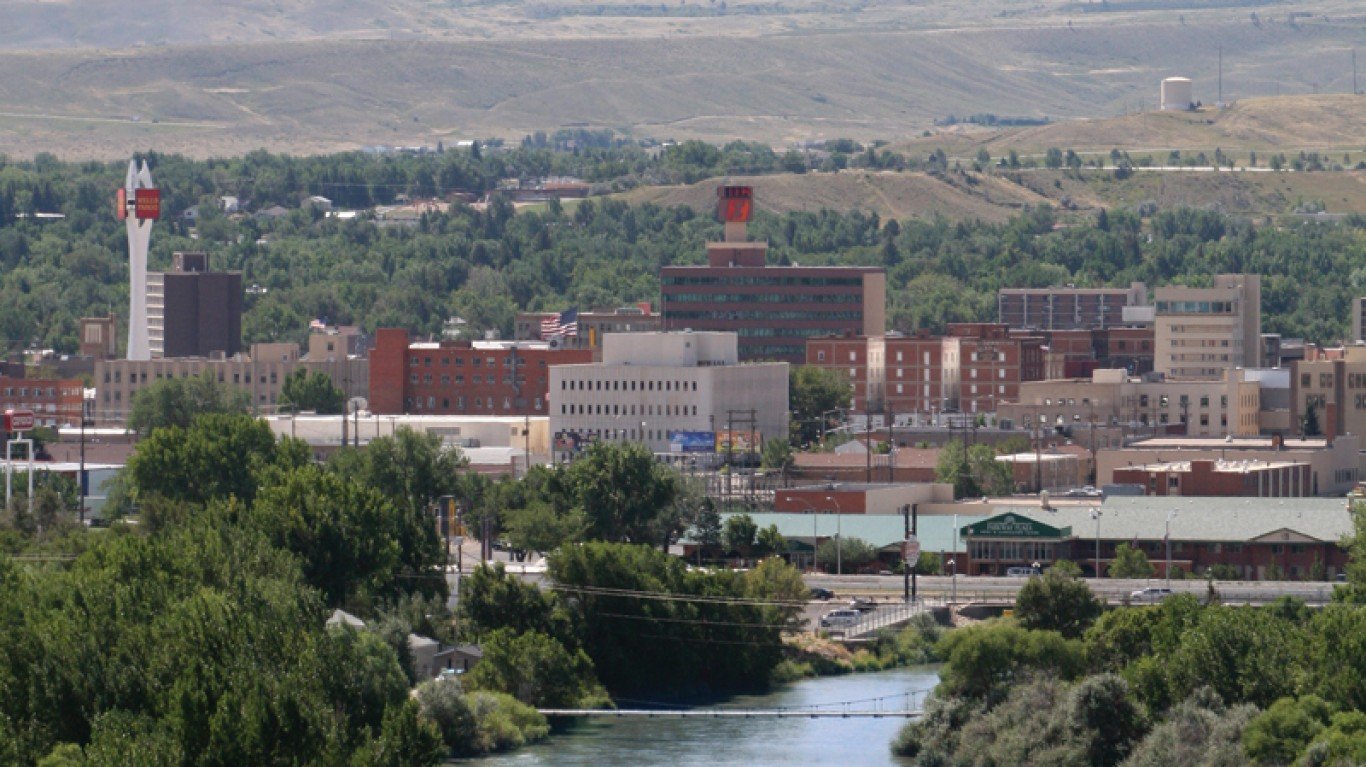
Wyoming: Casper
COVID-19 cases as of January 18 in Casper: 17,938 (22,329.6 per 100,000)
COVID-19 cases as of January 18 in Wyoming: 124,986 (21,595.5 per 100,000)
Peak pandemic unemployment in Casper: 12.6% (April 2020)
Casper population: 80,333 (15.0 per sq. mi.)
Click here to see all coronavirus data for every state.
Take This Retirement Quiz To Get Matched With An Advisor Now (Sponsored)
Are you ready for retirement? Planning for retirement can be overwhelming, that’s why it could be a good idea to speak to a fiduciary financial advisor about your goals today.
Start by taking this retirement quiz right here from SmartAsset that will match you with up to 3 financial advisors that serve your area and beyond in 5 minutes. Smart Asset is now matching over 50,000 people a month.
Click here now to get started.
Thank you for reading! Have some feedback for us?
Contact the 24/7 Wall St. editorial team.
